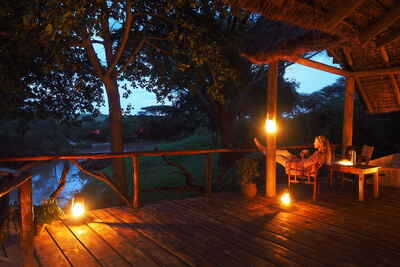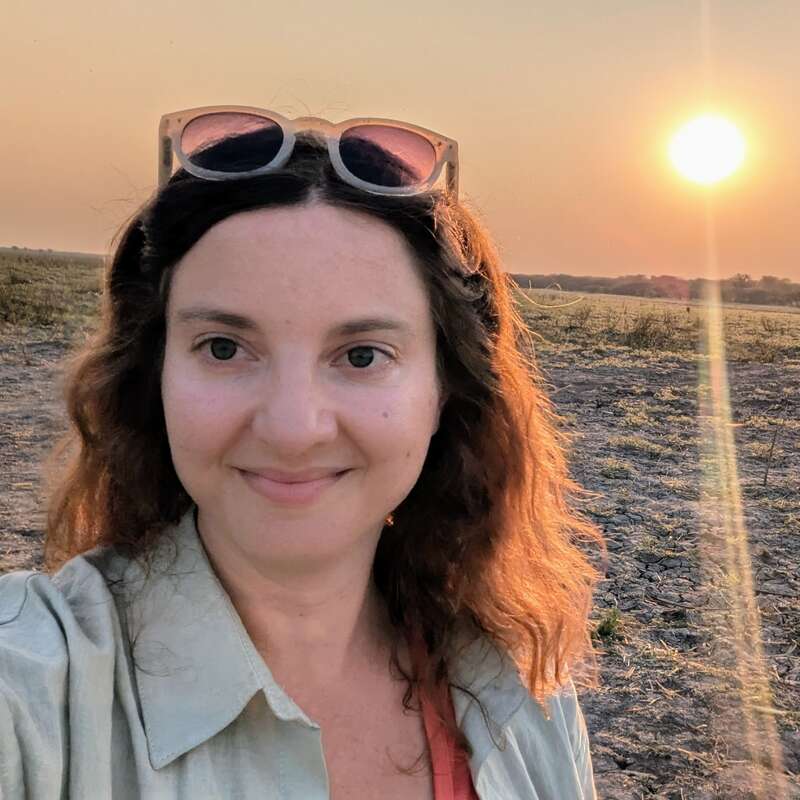About Basecamp Maasai Mara
A pioneering Mara eco-camp, opened in 1998, Basecamp Maasai Mara is a moderately sized tented camp in Koiyaki ...
... Group Ranch, just outside the Maasai Mara National Reserve. Close to Talek Gate and the small settlement of Talek, the camp is ranged in riverine forest along the north bank of the Talek River, which forms the reserve’s north-east boundary. The camp has direct access to the reserve via a private footbridge. Basecamp Maasai Mara achieved world fame in 2006 by hosting Barack Obama during his visit to Kenya two years before he became US president.
As much as being a safari camp, Basecamp Explorer is an experiment in sustainable tourism – and it’s a successful one. You might not expect to find such a good example of environmental best practice in an area that is perhaps the most despoiled in the Mara eco-system, but it is clearly much loved and proudly cared-for by the staff. All game drives are conducted across the river in the reserve itself. Basecamp Maasai Mara’s pluses are affordability, accessibility and environmental responsibility. The main negative is that you are in a busy area with lots of other visitors around.
Our view
As much as being a safari camp, Basecamp Explorer is an experiment in sustainable tourism – and it’s a successful one. You might not expect to find such a good example of environmental best practice in an area that is perhaps the most despoiled in the Mara eco-system, but it is clearly much loved and proudly cared-for by the staff. All game drives are conducted across the river in the reserve itself. Basecamp Maasai Mara’s pluses are affordability, accessibility and environmental responsibility. The main negative is that you are in a busy area with lots of other visitors around.
Accommodation
17 tents
Children
Good for 6+
Open
Open all year
Activities

4WD Safari

Birdwatching

Cultural excursion

Guided walking safari

Hot air ballooning

Private activities
Traveller reviews of Basecamp Maasai Mara
2 real, un-edited reviews from Expert Africa's travellers.
Arrived 4 Dec 2018, 4 nights
"Basecamp Maasai Mara review"
Overall rating: Excellent
Arrived 19 Jul 2014, 1 nights
"past its best-if it ever had one"
Overall rating: Poor
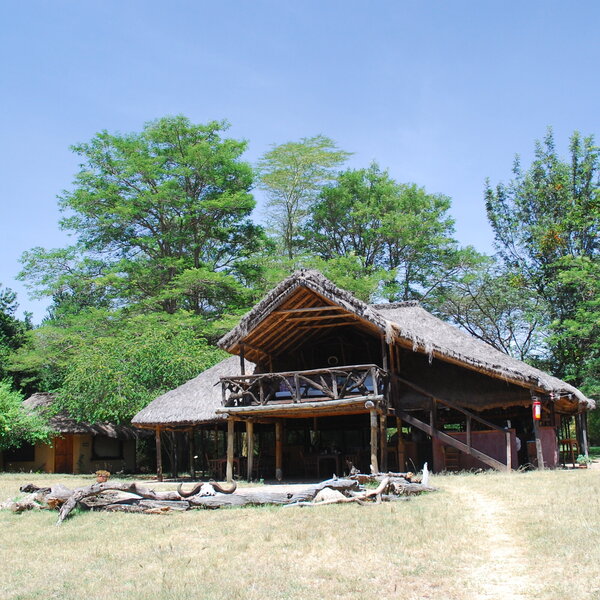
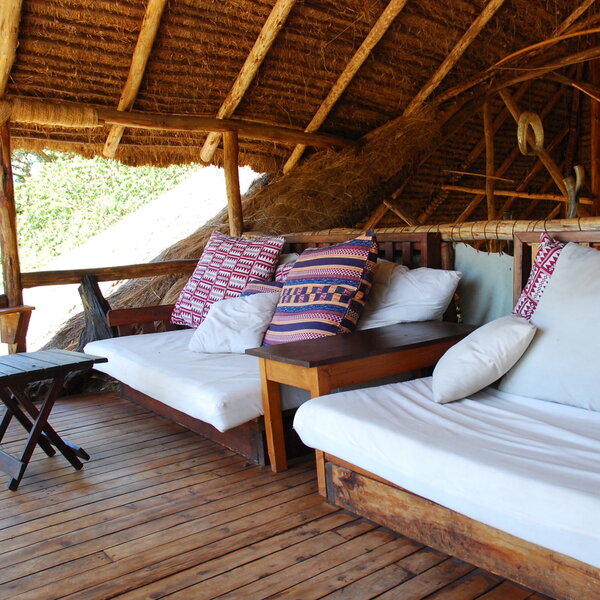
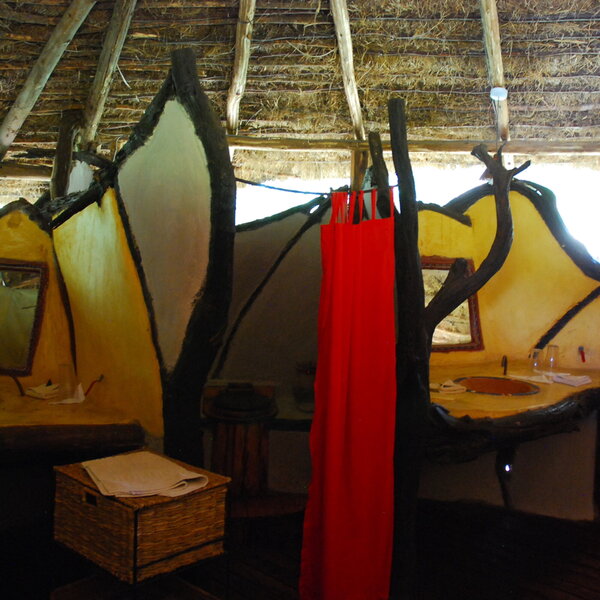
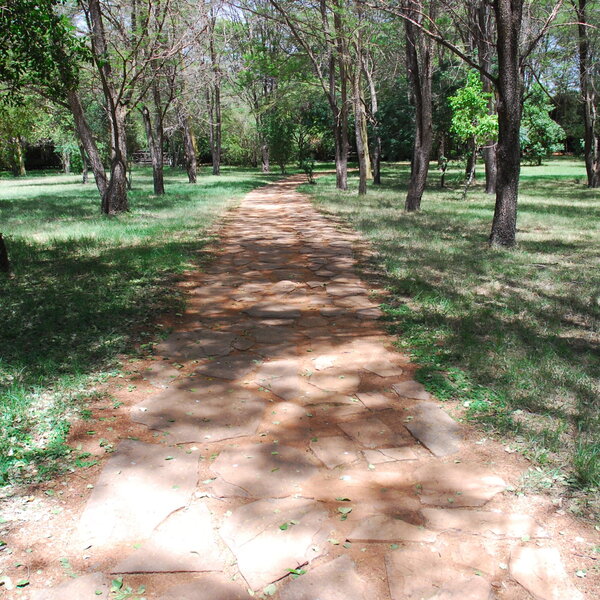
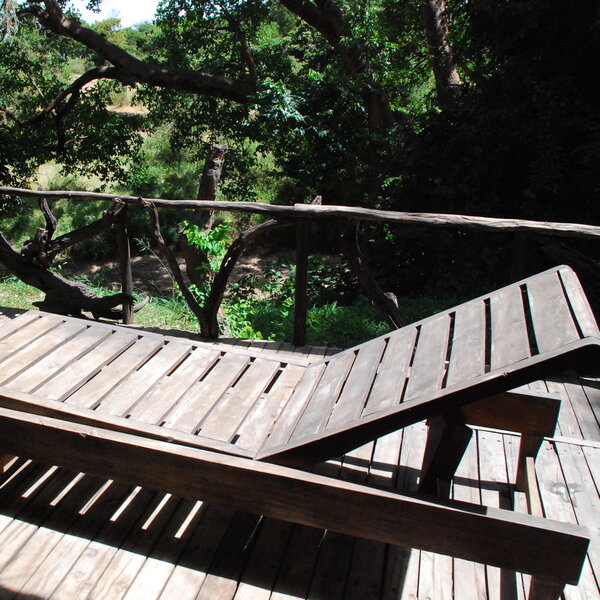

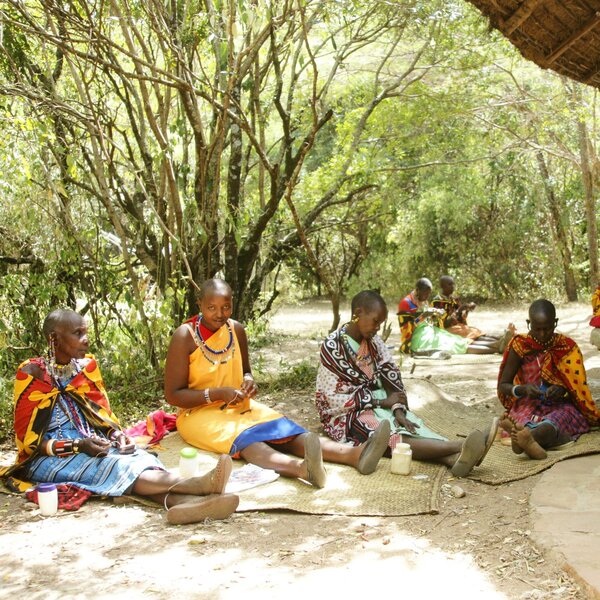
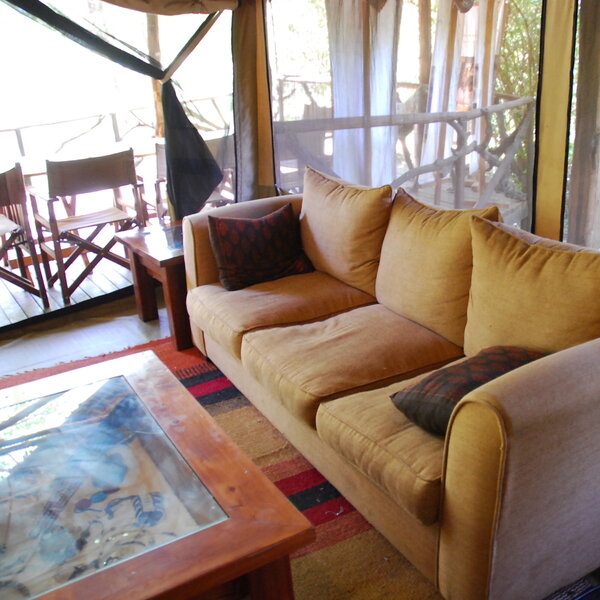
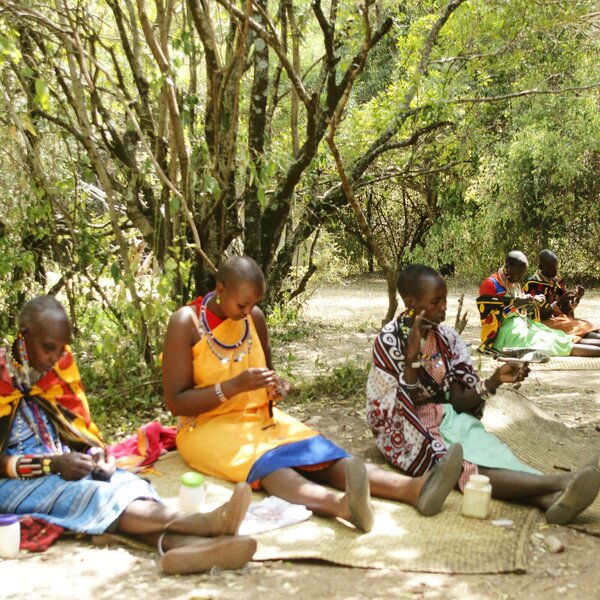
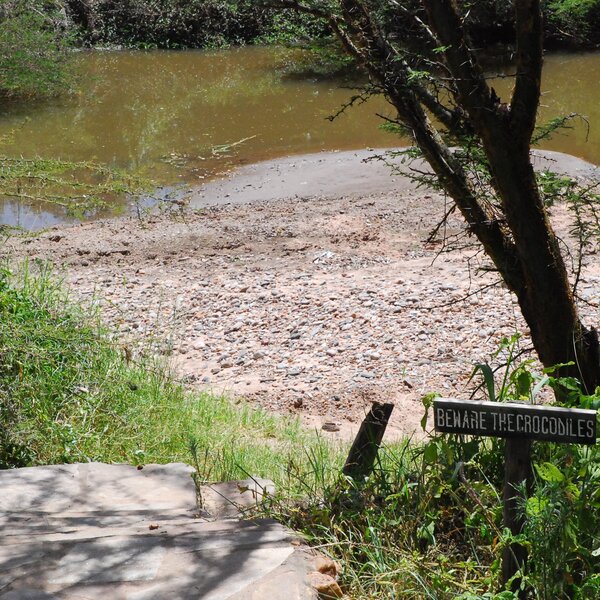
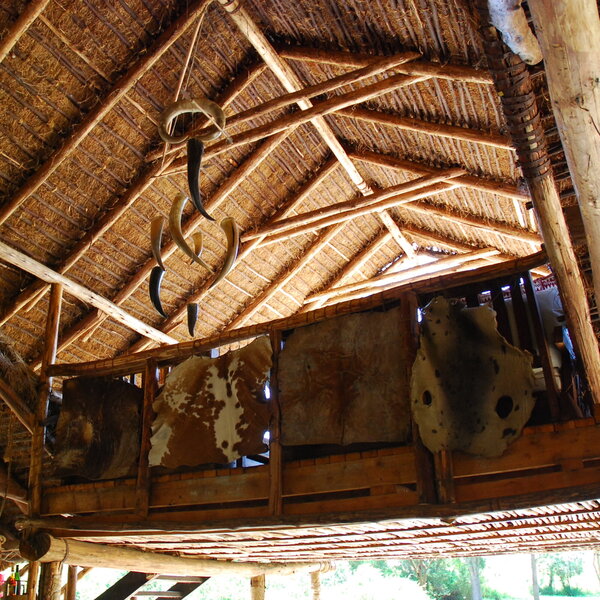
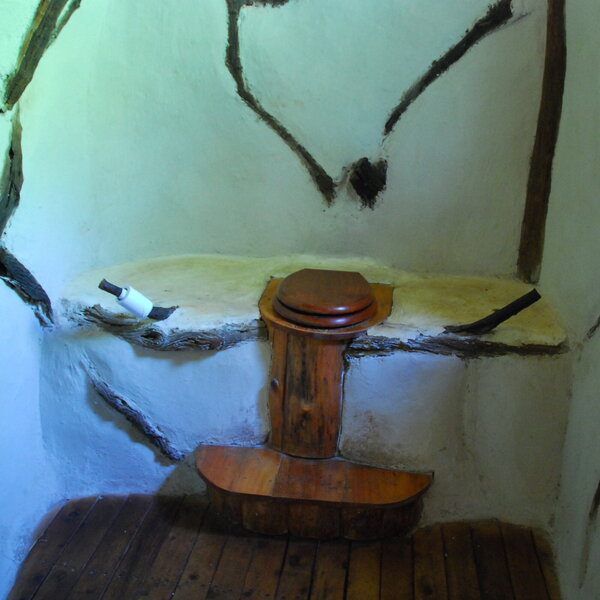
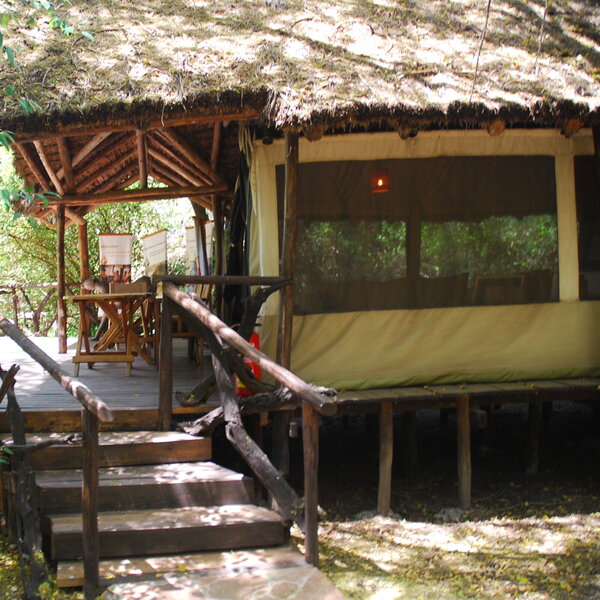
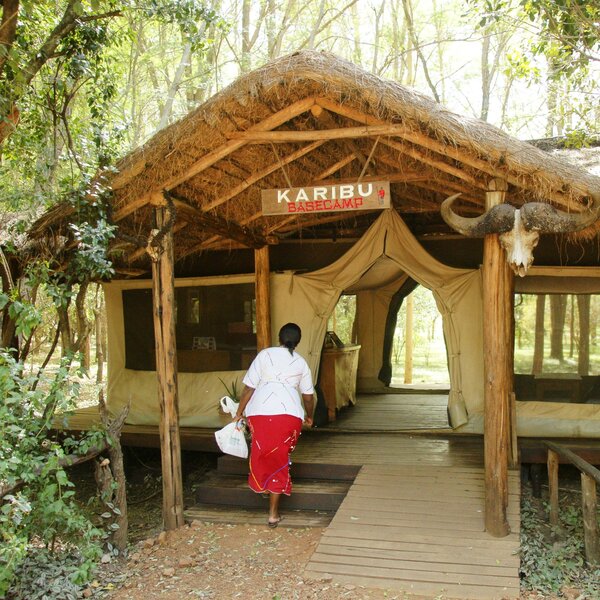
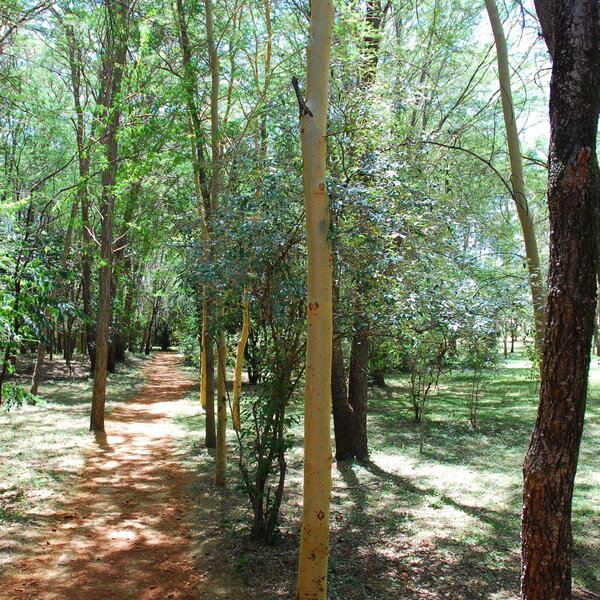
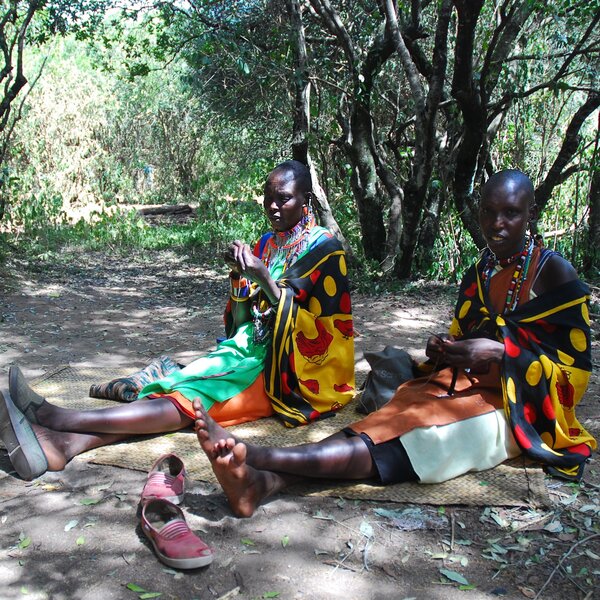
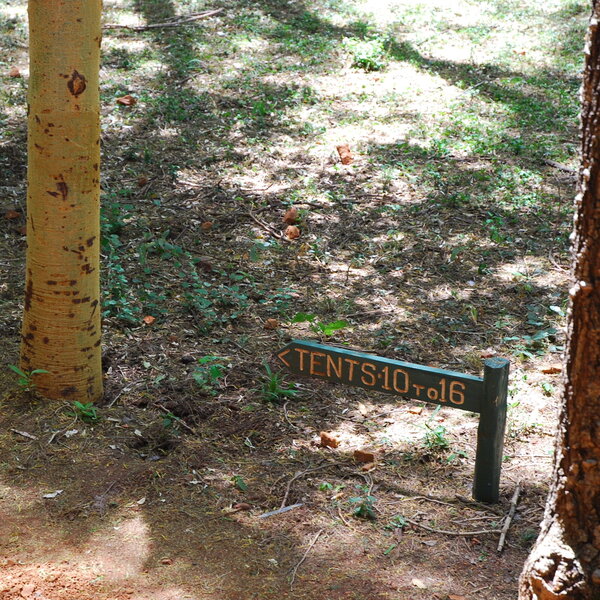
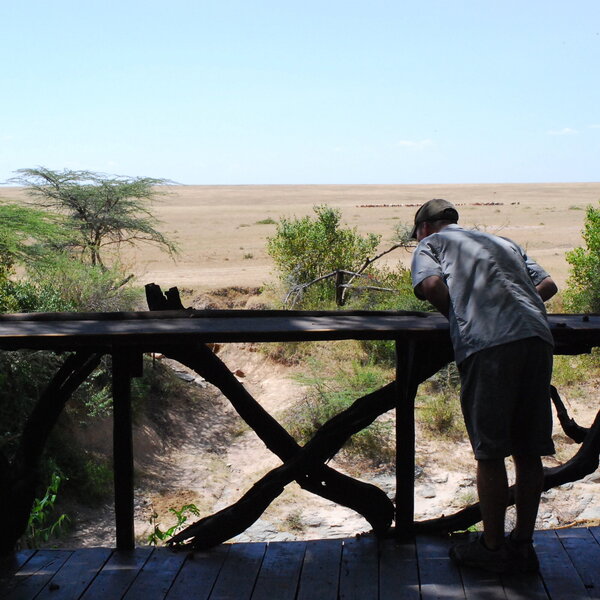
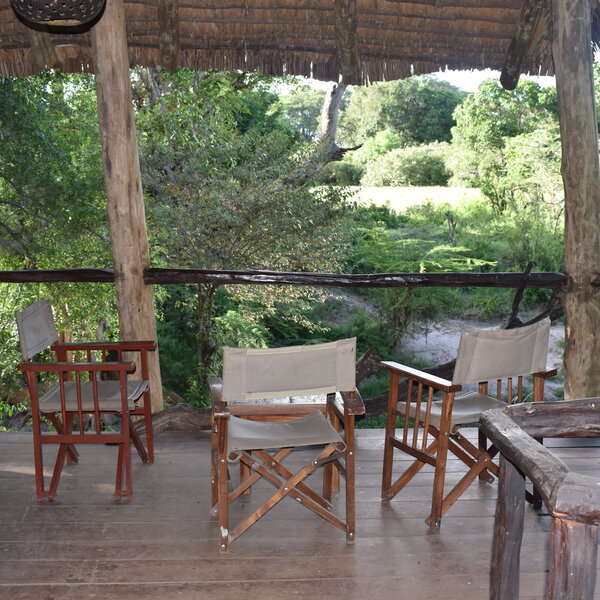
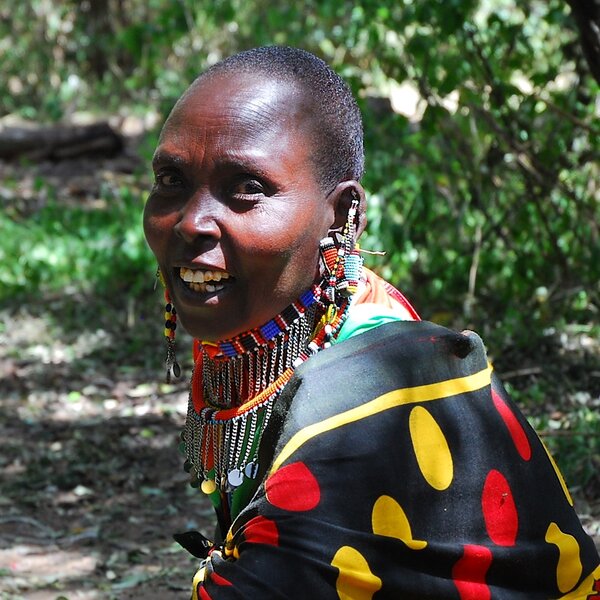
Expert Africa's gallery
When we travel we take lots of photos ourselves to give you a real and un-edited view of the safaris. See our 20 pictures and 1 videos of Basecamp Maasai Mara to get the candid view.
View galleryBasecamp Maasai Mara: Our full report
A pioneering Mara eco-camp, opened in 1998, Basecamp Maasai Mara is a moderately sized tented camp in Koiyaki ...
... Group Ranch, just outside the Maasai Mara National Reserve. Close to Talek Gate and the small settlement of Talek, the camp is ranged in riverine forest along the north bank of the Talek River, which forms the reserve’s north-east boundary. The camp has direct access to the reserve via a private footbridge. Basecamp Maasai Mara achieved world fame in 2006 by hosting Barack Obama during his visit to Kenya two years before he became US president.
There are now four Basecamps in Kenya, all in the Mara eco-system: as well as the original Basecamp Maasai Mara, the group operates and Basecamp Leopard Hill and Basecamp Eagle View in the Mara Naboisho Conservancy, about 45 minutes drive to the north, and its neighbour Basecamp Dorobo, a fly camp just 3km from Eagle View. Note that the subject of this review, Basecamp Maasai Mara, is also known as ‘Basecamp Masai Mara’, and used to be called ‘Basecamp Mara’. Is also sometimes referred to as the ‘Basecamp at Talek’, ‘Basecamp Explorer’ or ‘Main Basecamp’.
Although the immediate environs of the camp are over-grazed and its location, close to the settlement of Talek, is not the most exciting, once you’re through the camp gates, and particularly after you’ve gone through reception which physically separates the parking area from the main area of the camp – you enter a different environment altogether. Based around the ‘positive footprint’ concept, Basecamp Maasai Mara aims to put into its environment more than it takes out and they have planted more than 20,000 trees just outside the gates in recent years. Guests are welcome to visit the plantation.
The double-storey lounge and dining area is floored with crazy paving and is sheltered by high roofs made of tiles of local Kilgoris grass. Dining chairs are all the directors’ variety, which you may want to eschew as soon as your meal is over for a comfier seat – on one of the cushioned bunks downstairs or the simple sofas on the balcony. As well as the dining area and lounge, the Migration Bar offers a sit-up bar and bar stools.
Basecamp Maasai Mara’s 17 tents are set up on wooden platforms, dotted around the shady, wooded site, with plenty of space between each tent – no views of a row of parallel tents like a military encampment here. Each tent – large, rectangular and made of canvas and mosquito screen – rests on a much larger wooden deck, with recliners and hammocks to hand for whiling away the hot hours in the middle of the day. Sheltering the tent is a pitched roof of Kilgoris-grass tiles supported by wooden pillars, partly filled with pleasingly irregular walls constructed of wood and mud.
The grass-tiled roofs are renewed every two years, but the tents themselves are all original, and were certainly showing their age when we last inspected the camp. We understand that since we last visited the tents have undergone significant refurbishment. The tents offer either a king-size double or twin beds. The en-suite bathrooms are now more modern in design, and feature two solar heated showers (one outside and one inside). The old throne-like, composting toilets with no flush have now been replaced with a standard style bio-flush toilet.
Activities from Basecamp Maasai Mara major on game drives in the Sekenani sector of the Maasai Mara National Reserve. The camp uses closed vehicles with pop-top roofs. When the water in the Talek River is low, which it is most of the year, the footbridge from the camp into the reserve can be used, avoiding a 15-minute drive through the settlement of Talek at the start and finish of each game drive. Instead, guests walk with a guide to a vehicle pick-up point inside the reserve on the other side of the river, returning to the same point at the end of the game drive.
For those interested in local culture, school visits are on the agenda, and can be very worthwhile. The two-hour walks to the Talek community area include guidance on the local economy. Typically you either leave at 6.30am and come back for breakfast, or take breakfast with you and get back about 11.00am. A group of Maasai women in the camp make craft souvenirs under the ‘Basecamp Mara’ brand.
Basecamp Maasai Mara’s environmental credentials are impeccable: it is one of only three properties in the Maasai Mara and six in the whole of Kenya to have earned an Eco-Tourism Kenya gold award. Water comes from a 60,000-litre rainwater tank supplemented by a tanked-in supply (they are also studying a borehole proposal). They have a system that separates fat from water and they reuse all kitchen and tent grey water in their vegetable gardens. Toiletries are eco-friendly and the toilets are composting, dry toilets. Most of the camp’s power is supplied by three, 4m² solar panel units, each unit serving four tents. Very little concrete has been used in camp – and much of the building material consists of mud and sustainably sourced dead wood. If you’re interested, you can do a comprehensive tour of the camp, with a running commentary on its innovative and sustainable features. Be sure to visit the charcoal-cooled larder, where the camp stores its fruit and vegetables out of the heat – and safe from raiding monkeys.
Children will enjoy the camp’s relaxed approach, the river setting and the funky architecture of the tent platforms and their decks and bathrooms. The fig-tree platform – a delightful walkway and deck area overlooking the river – is a big hit with kids. This is not a fancy camp and has most appeal for the sort of people who approve of children getting involved in the environment and other cultures. There’s plenty of space for kids to kick a football around and generally let off steam. In other words children are not only welcomed by the camp but will feel welcome by most other guests.
Geographics
- Location
- Maasai Mara National Reserve, Kenya
- Ideal length of stay
- 3–4 days
- Directions
- Ol Kiombo airstrip is 45 minutes’ drive from camp if you don’t stop for game-viewing.
- Accessible by
- Fly-and-Transfer
Food & drink
- Usual board basis
- Full Board & Activities
- Food quality
- During our stay in 2023, dinner served was soup with some fresh bread, main course was a vegetable curry with chapati and rice. To finish off dessert was a chocolate cake with ice cream with tea and coffee. The food was of a good standard. Vegetarians can be catered for but will need to make requests in advance.
- Dining style
- Individual Tables
- Dining locations
- Indoor and Outdoor Dining
- Further dining info, including room service
- Morning tea or coffee is served to the tents, and there is no problem having meals in your tent.
- Drinks included
- Drinks are separately charged in Kenya shillings: soft drinks Ksh150 ($1.50); beer Ksh300 ($3); glass of house wine Ksh450 ($4); spirits individually priced
Special interests
- Family holidays
- During a Kenyan family holiday at Basecamp Maasai Mara, children can join in with activities offered by the Dorobo club. This camp is a great example of eco-friendliness and cooperation with local communities, for ages 6+. Walks require children to be aged 15+.
- See ideas for Family holidays in Kenya
- Photography holidays
- Sitting on your deck with a camera at Basecamp Maasai Mara is always rewarding. Birds and monkeys often fill the trees near the tents, and there are areas in camp where you can get uninterrupted views across the Talek River to the herds of game in the reserve.
- See ideas for Photography holidays in Kenya
- Cultural Experiences
- School visits are on the agenda here, and can be very worthwhile. The 2-hour walks around the Talek community area include background on the local economy. A group of women make souvenirs, and the proceeds of these go back to the community.
- See ideas for Cultural Experiences in Kenya
Children
- Attitude towards children
- ‘We are a family place’
- Property’s age restrictions
- 15 is the minimum age for walks outside the camp.
- Special activities & services
- Children can take part in the Dorobo club: making bows and arrows, butterfly catching, skirt making and beadworks.
- Equipment
- Cots are available, but no highchairs.
- Generally recommended for children
- Yes, very much so.
- Notes
- Although the camp is fenced on the land side, there is open access to the river, so little ones must be under constant parental supervision.
Our travellers’ wildlife sightings from Basecamp Maasai Mara
Since mid-2018, many of our travellers who stayed at Basecamp Maasai Mara have kindly recorded their wildlife sightings and shared them with us. The results are below. Click an animal to see more, and here to see more on our methodology.

100% success

100% success

100% success

100% success

100% success

100% success

100% success

100% success

100% success

100% success

100% success

0% success

0% success

0% success

0% success

0% success
Communications
- Communications
- Guests can obtain a free WiFi password from reception. The camp has cellphone coverage.
- TV & radio
- None
Sustainability
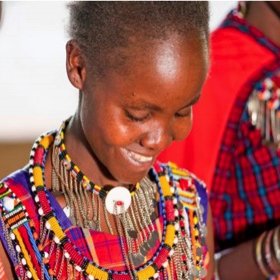
A base for the Maasai Beading Brand
Set at Basecamp Maasai Mara, next to Talek village, a fair-trade certified entrepreneurial initiative is empowering disadvantaged Maasai women and preserving the Maasai beading tradition. The Basecamp Maasai Brand (BMB) is a community-based handicraft workshop which provides a source of income to over 150 Maasai women, all between 17 and 60 years of age while indirectly benefitting about 600 people.
The artisans receive directly 55% of revenues, the rest covering salaries for the Management group and tools. The women are also involved in the pricing strategy, which takes into consideration the cultural significance of the product being sold. To date, 60% of the women have installed solar panels in their homes, covered education costs for their children up to secondary school level and bought water tanks which provide them with clean water. Additionally, the communal setting at the BMB workshop provides them with an appropriate environment for exchanging opinions and ideas.
In the last 3 years, BMB has grown financially and generated 7.5 million Kenyan Shillings (£57,000) in sales in 2017.
Products manufactured are high-quality and eco-conscious, using Maasai glass beads and leather as well as recycled or waste materials such as scrap metal. For example, a thread made from strands of recycled plastic food bags.
Guests can directly support Maasai artisans by visiting their workshop at Basecamp Masai Mara or purchasing products from Basecamp Explorer’s camps in Spitsbergen and Kenya. Donations are also encouraged as contribution to a goal of raising USD 20’000 for upgrading the BMB workshop site, enabling the Maasai women to introduce more designs and widen the range of their beading products.
See more great sustainability projects in Kenya
Health & safety
- Malarial protection recommended
- Yes
- Medical care
- The camp has a contract with the CMF clinic in Talek. In an emergency, guests would be evacuated by the Red Cross or Flying Doctors via Ol Kiombo airstrip.
- Dangerous animals
- High Risk
- Security measures
- There are whistles in the tents to attract attention in case of emergency. The camp is fenced on the land side, but not on the river side; ‘Beware the Crocodiles’ reads one sign. Askaris and armed police are usually on duty at night; an askari is usually on duty by day.
- Fire safety
- Fire extinguishers are positioned at every tent and there are three fire assembly points. Staff are trained by external trainers who visit every six months.
Activities
4WD Safari
Birdwatching
Cultural excursion
Guided walking safari
Hot air ballooning
Private activities
Extras
- Disabled access
- In Place
- Laundry facilities
- Full Laundry Service - Extra Charge
- Money
- Safe deposit at reception
- Accepted payment on location
- Cash payments may be made in US dollars, pounds sterling, or euros, as well as Kenyan shillings. Visa and MasterCard are accepted with a 4% surcharge.
Plan and book your trip with Expert Africa
All of our trips are tailor-made, so we'll always adapt them to suit you. Talk to an Expert and let us plan and arrange your perfect trip.

Talk to an Expert
Call or email us now! We’ll match you with the Specialist in our team who is best suited to help you. Then together we can start planning your trip.

Set up your itinerary
Based on our experience and your ideas, your specialist will create a detailed, costed itinerary. We’ll refine it together, until we have a trip that you’re perfectly happy with.

Prepare for your trip
The same Specialist will make the seamless arrangements for your trip, send you detailed travel documents, and be available to answer any questions before you depart.

Travel with peace of mind
After you set off, you’ll be cared for by our partners in Africa, most of whom have worked with Expert Africa for decades. And if you ever need us urgently, we’re available 24/7.

When you return
We love to learn about your trip, and so will always be grateful if you’ve the time to give feedback to your Specialist when you return.
Basecamp Maasai Mara's location
Look closer at the environment and surroundings of Basecamp Maasai Mara.
Excursions from Basecamp Maasai Mara
Optional extra day-trips and excursions possible whilst you're staying at Basecamp Maasai Mara. Talk to us: these are usually best arranged before you go.
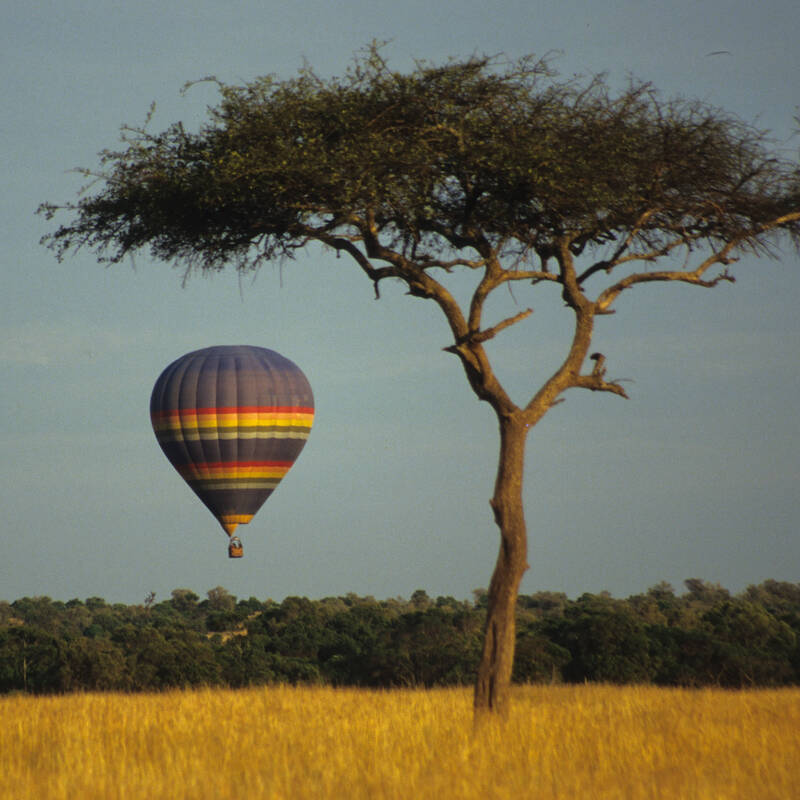
Balloon flight over the Mara
3 hours in total - morning only
With the sun rising over the Loita Hills, you scramble into the balloon basket for the start of a once-in-a-lifetime experience. You’re about to go drifting with the breeze above the trees and plains of one of the world’s greatest wildlife regions.
More about Balloon SafariOther lodges in Maasai Mara National Reserve
Alternative places to stay in this same area.
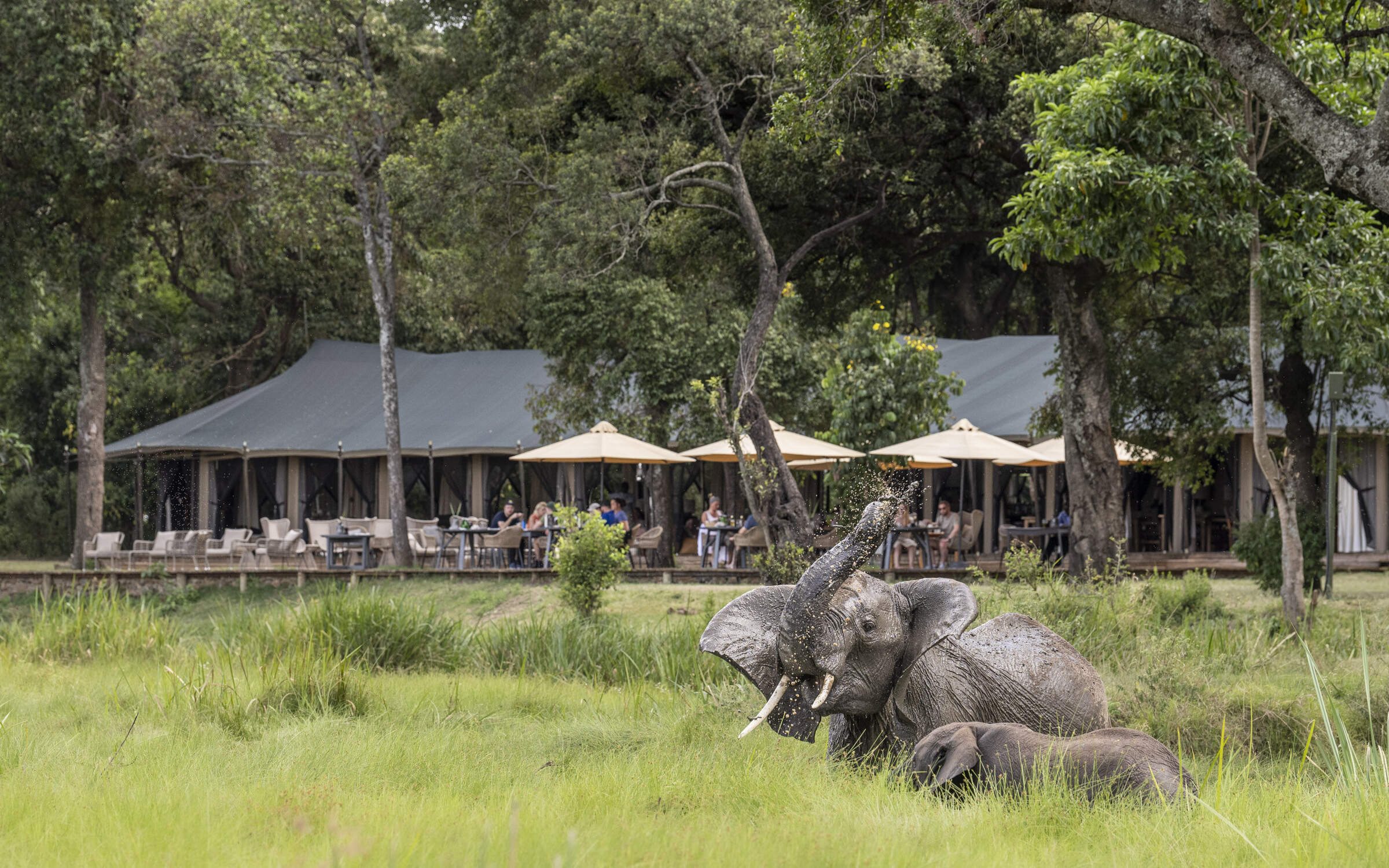
Little Governors'
Little Governors’ Camp sits by a swamp (an old oxbow of the Mara River) in the Mara Triangle sector of the Maasai Mara National Reserve. It has its own balloon-launching site.
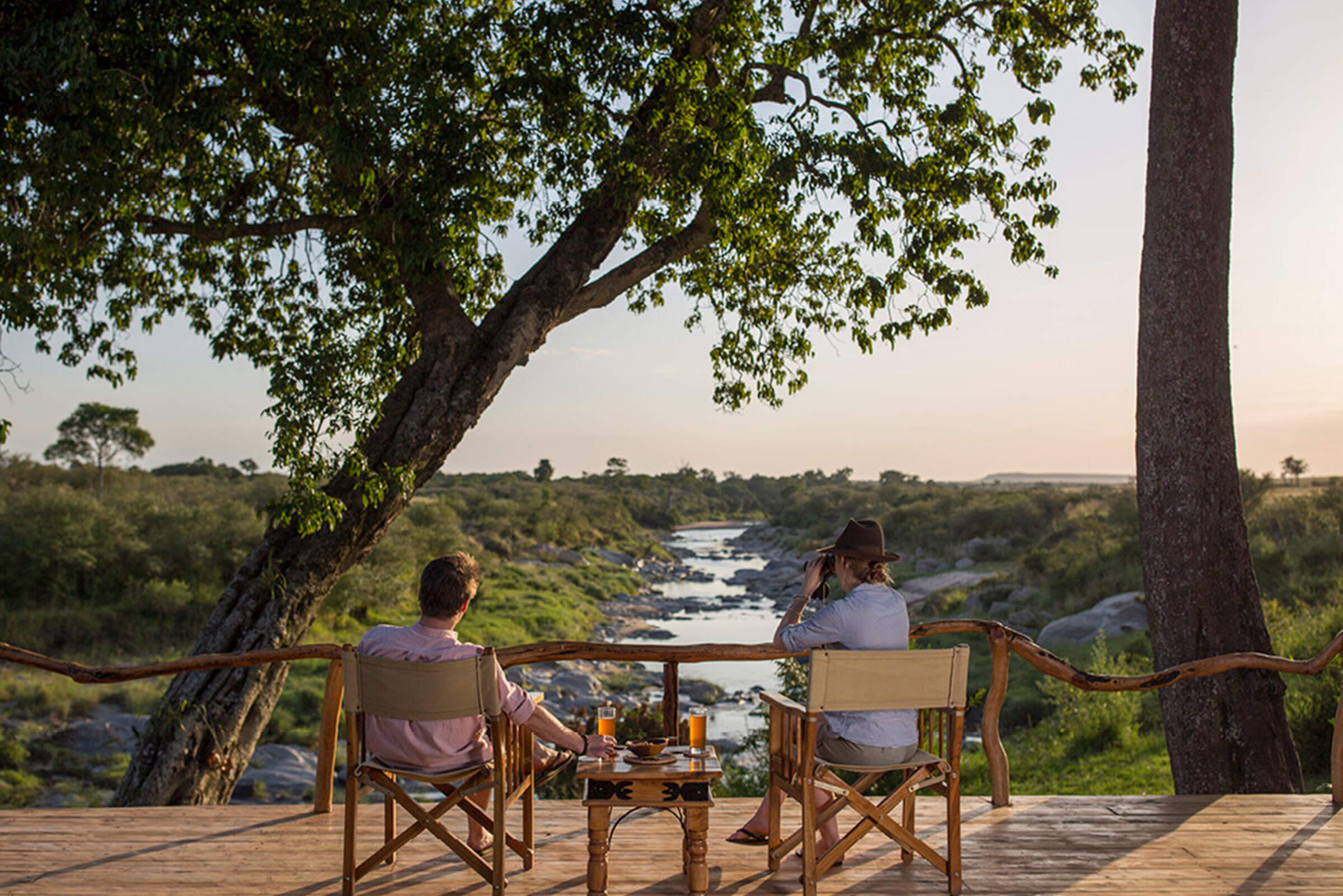
Rekero
Rekero is an unpretentious, high-end safari camp, for travellers who take their wildlife watching seriously and are prepared to pay for an exceptional location.
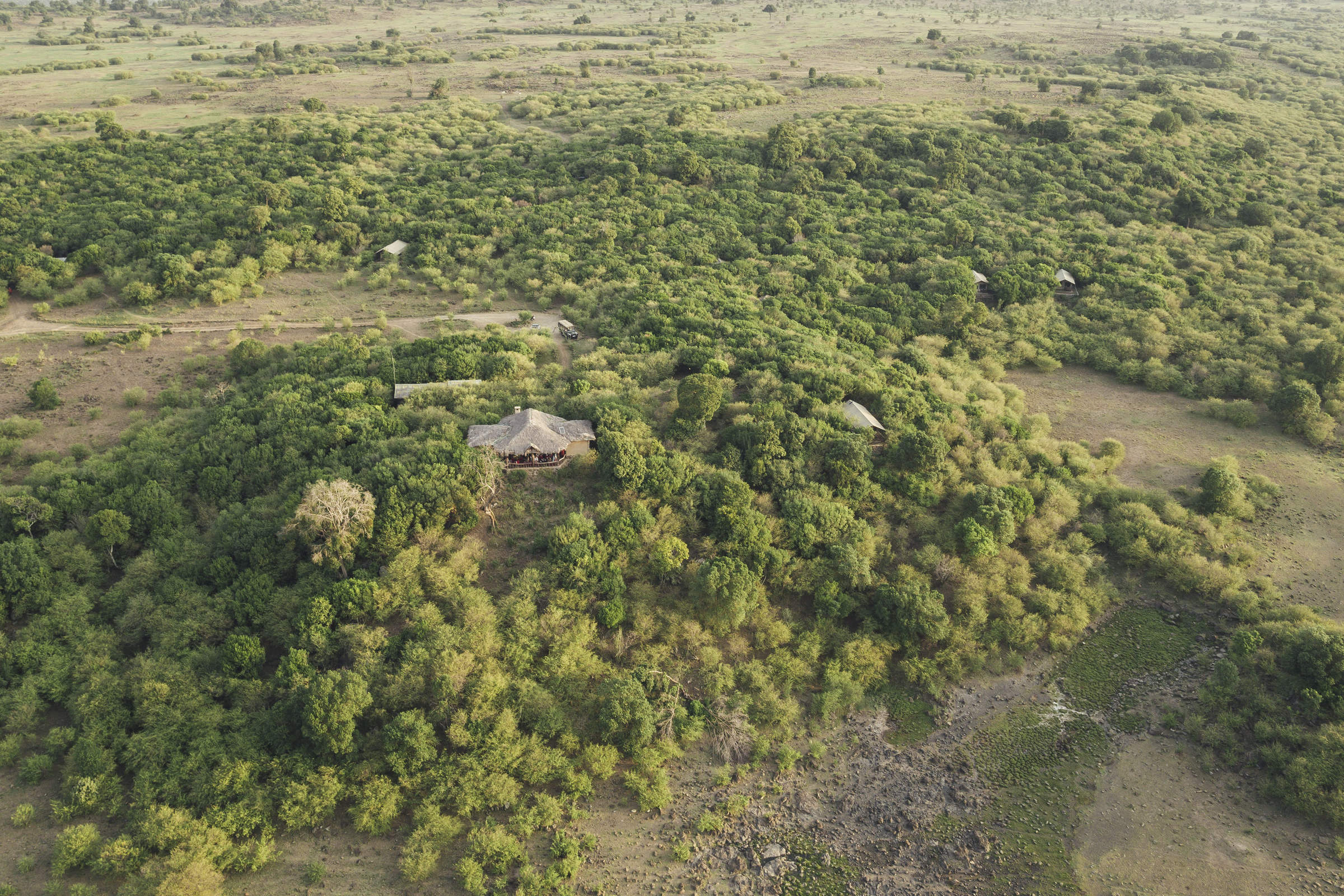
Tangulia Mara
Tangulia Mara is a rustic and traditional safari camp on the border of the Maasai Mara National Reserve owned by Jackson Looseyia of Big Cat Diary fame.
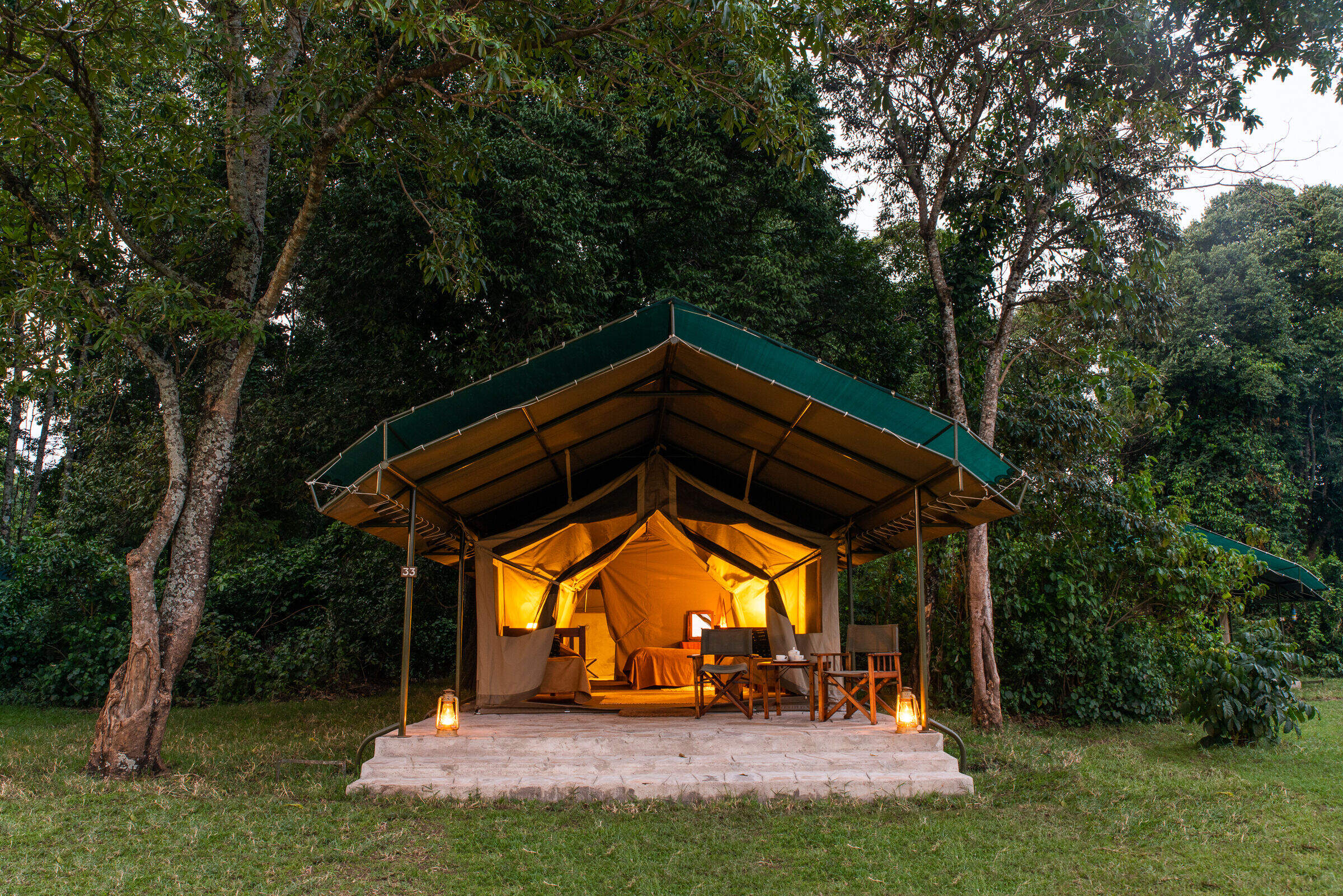
Governors' Camp
Governors' Camp is a large tented camp on the Mara River and one of the oldest in the Mara region, dating from 1972. Although unfenced, and regularly visited by elephants, the whole compound is always busy with human activity.
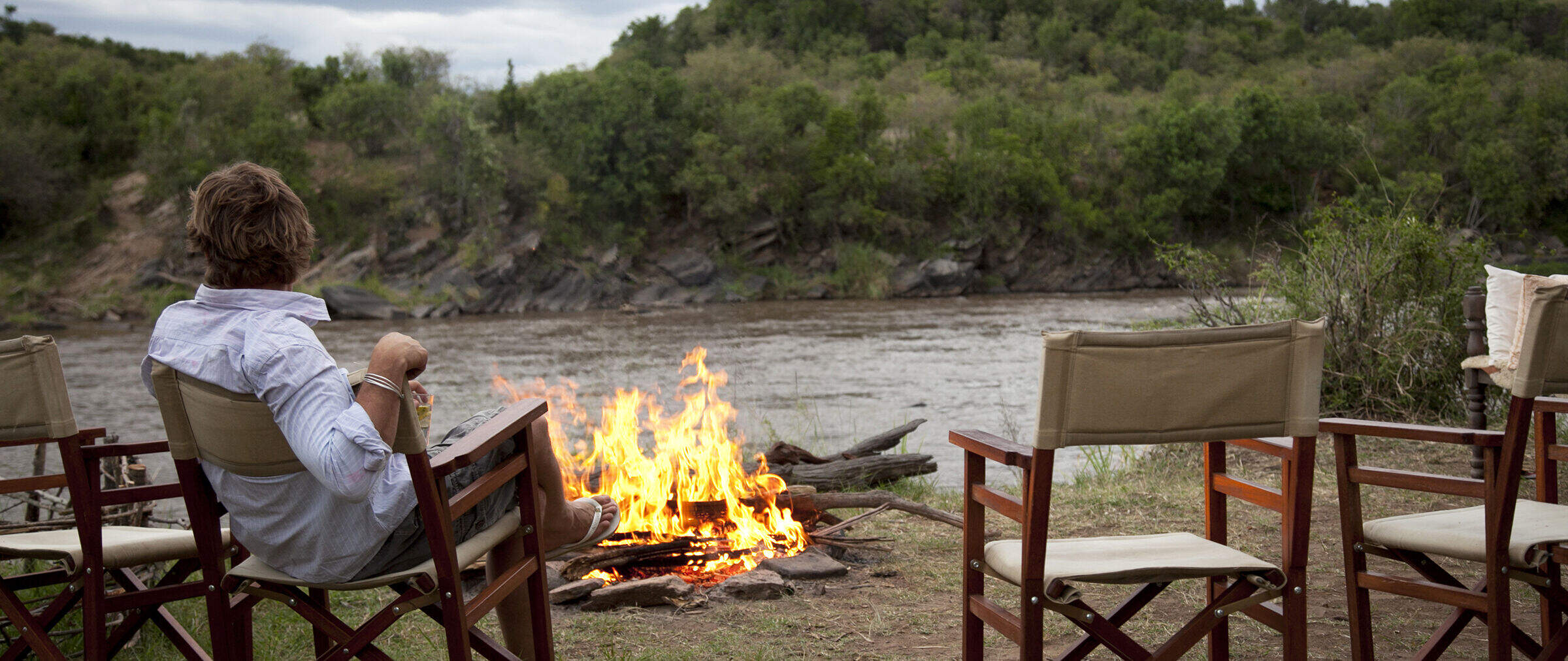
Serian Nkorombo
Serian Nkorombo is a luxury bush camp in the Musiara sector of the Maasai Mara National Reserve on the east side of the Mara River.
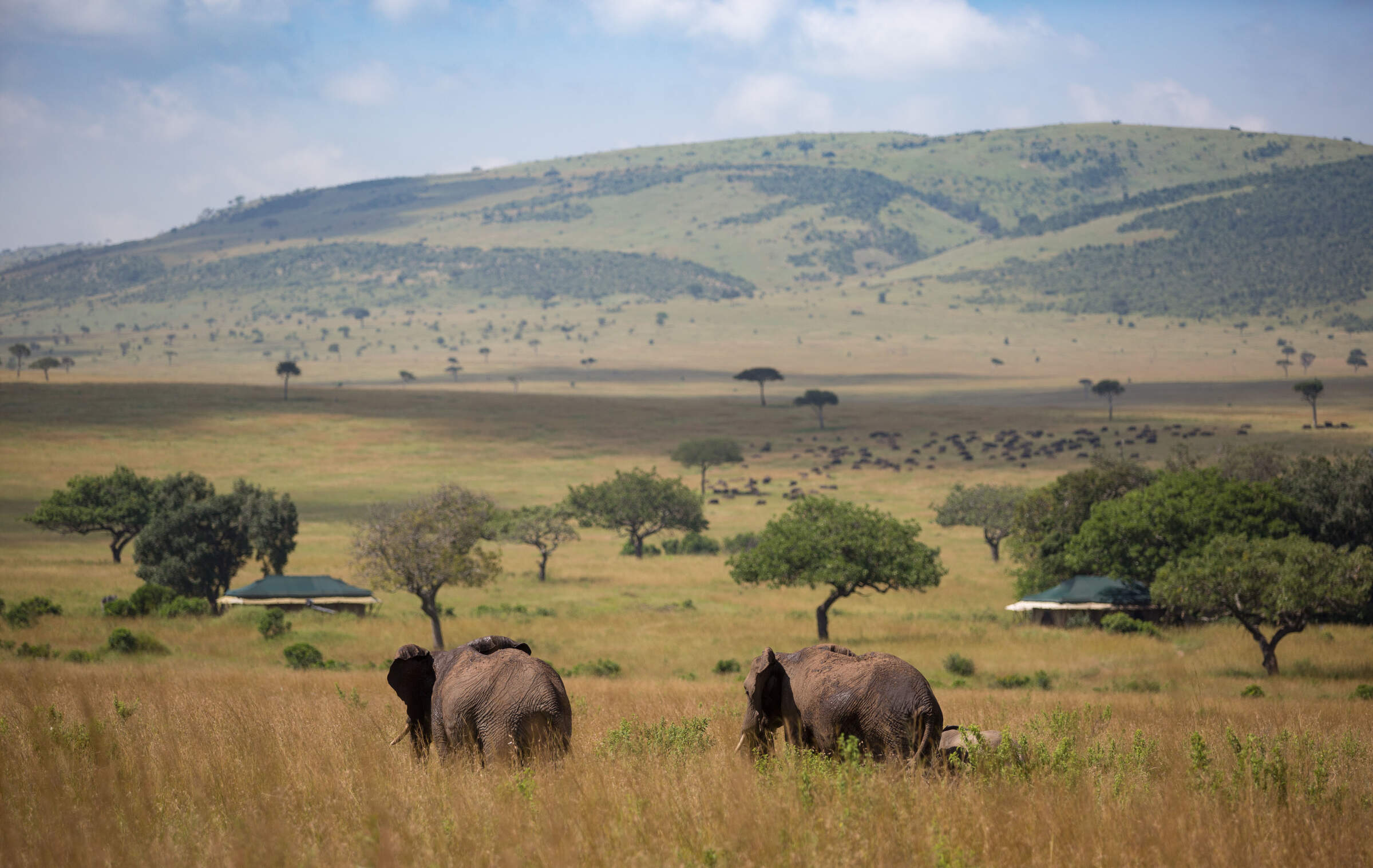
Sand River Camp
Luxury colonial-style tented camp on the banks of the Sand River close to the Tanzania border – a great spot to see the wildebeest migration.
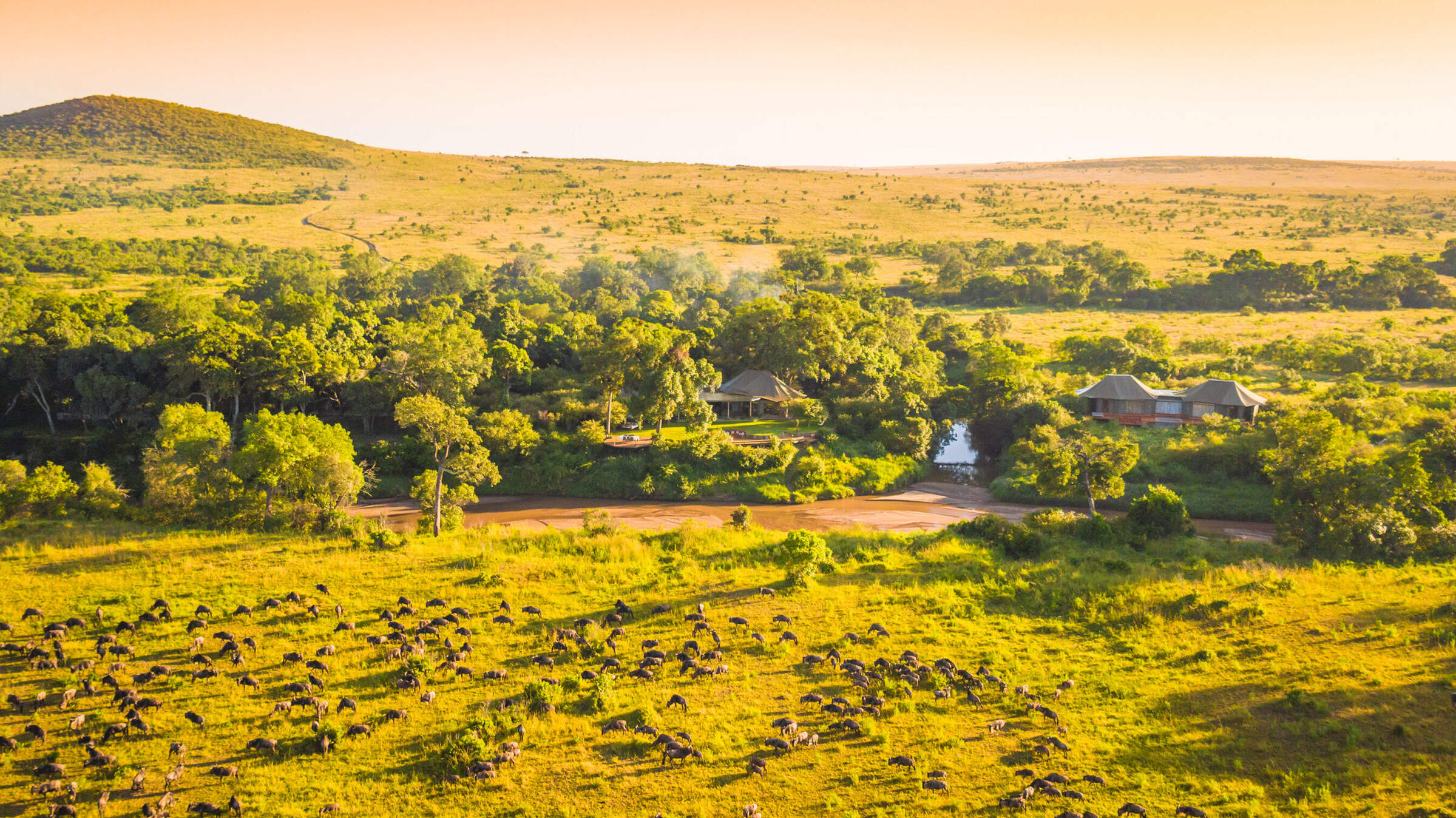
Sala's Camp
Sala’s Camp is a comfortable and intimate tented camp, with seven tented rooms, located on the banks of the Sand River, in the far south of the Maasai Mara National Reserve.
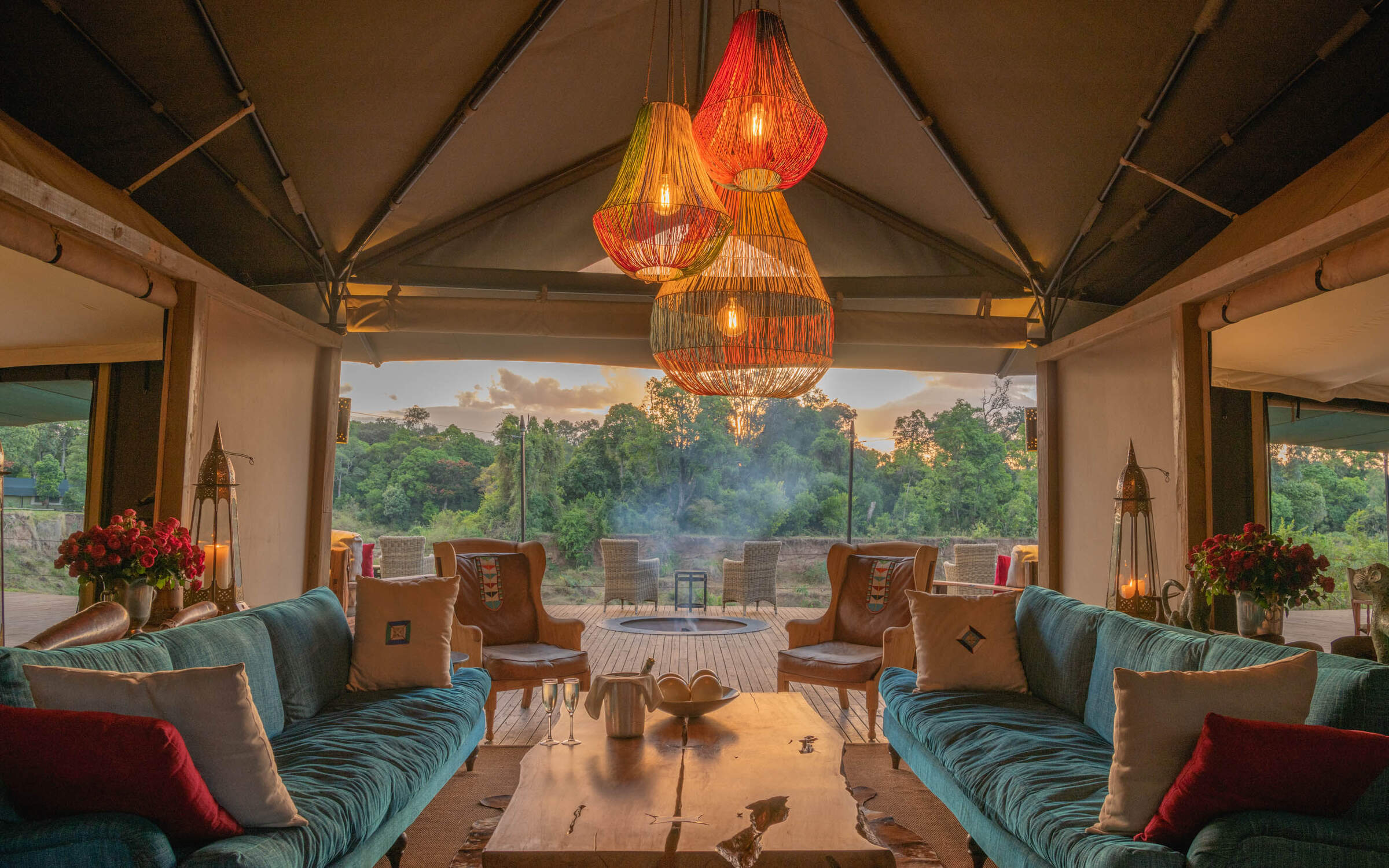
Governors' Il Moran
The smallest and most expensive of the three camps in the Governors’ group, Governors’ Il Moran Camp hugs a meander of the Mara River just 1km north of the main Governors’ Camp.
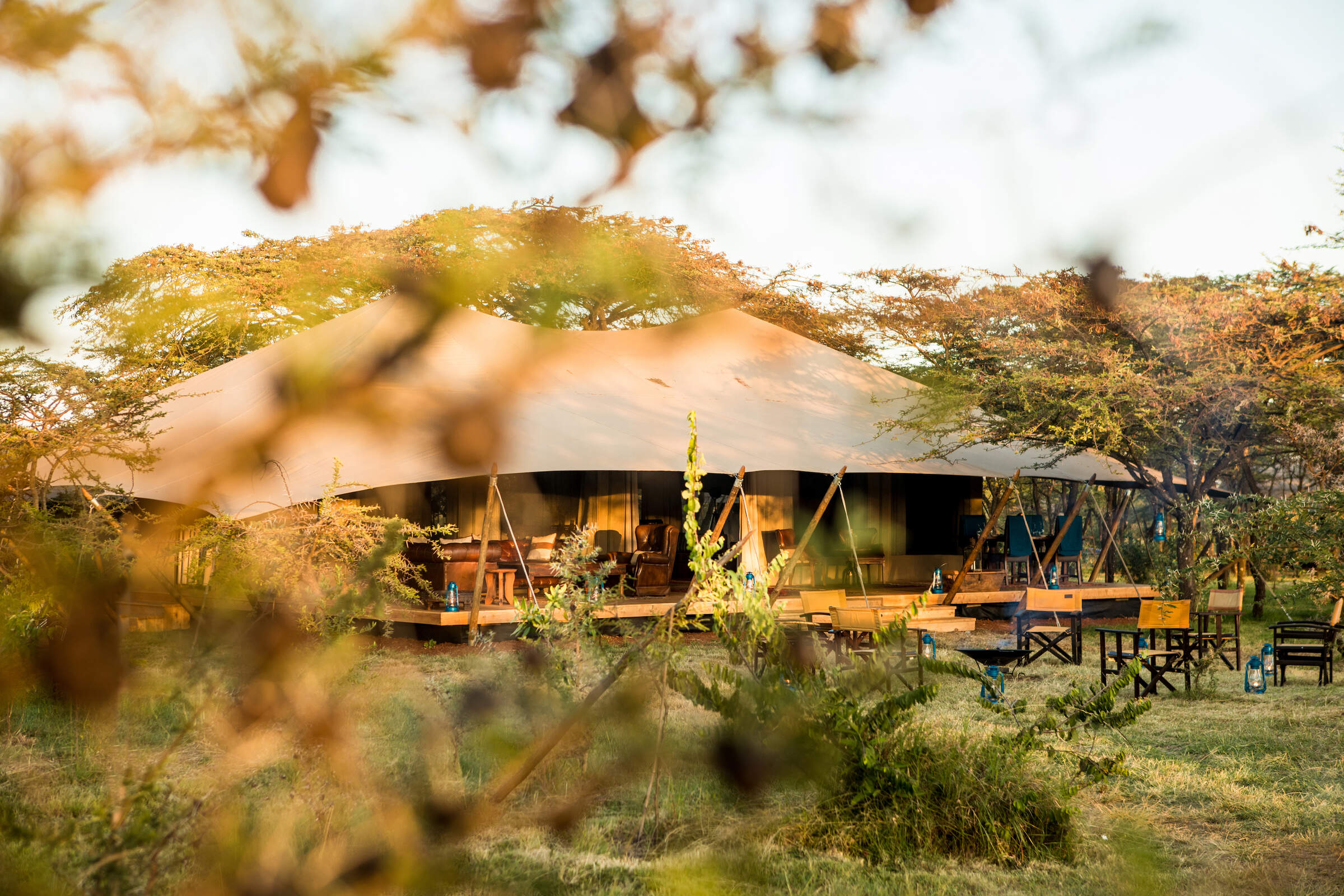
Mara Expedition Camp
Mara Expedition Camp is a small luxury camp located in a slightly elevated area of bush and woodland, just outside the Maasai Mara National Reserve.
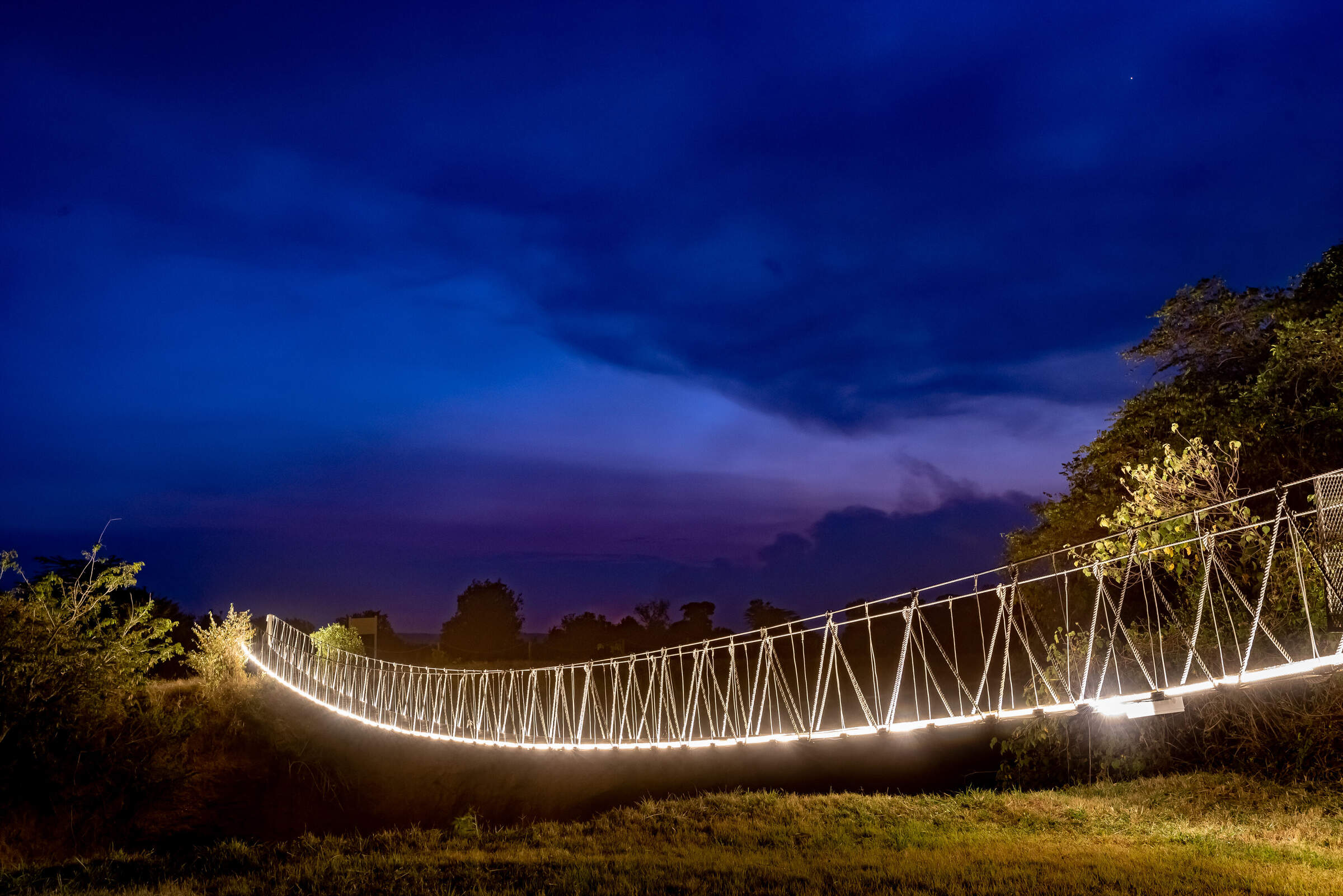
Ilkeliani Camp
Ilkeliani Camp is a smart elegant camp overlooking the Talek River, on the edge of the Maasai Mara National Reserve.
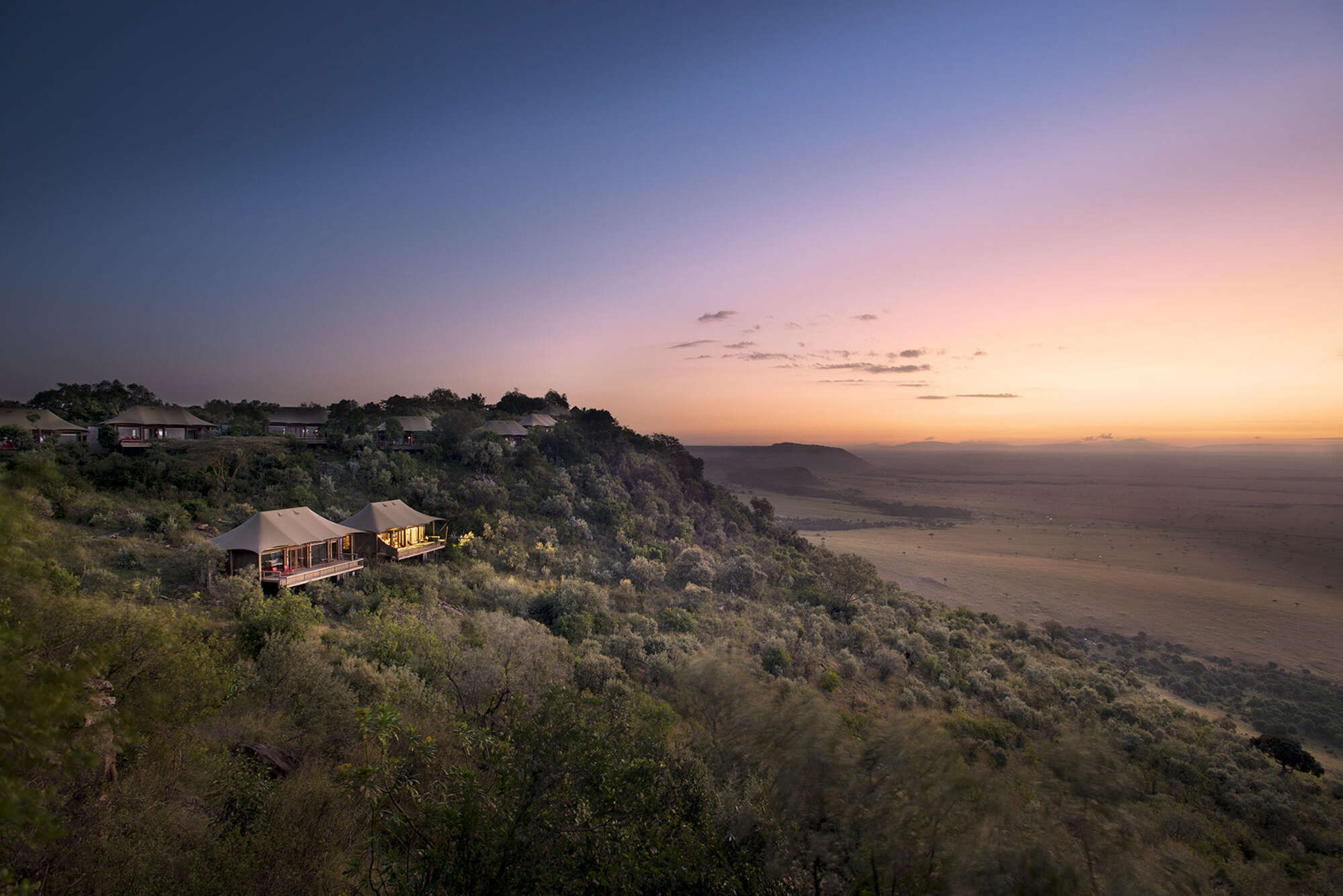
Angama Mara
Angama Mara is a top-end luxury tented camp on the Siria-Oloololo escarpment of the Maasai Mara ecoystem, just above the Mara Triangle sector of the Maasai Mara National Reserve.
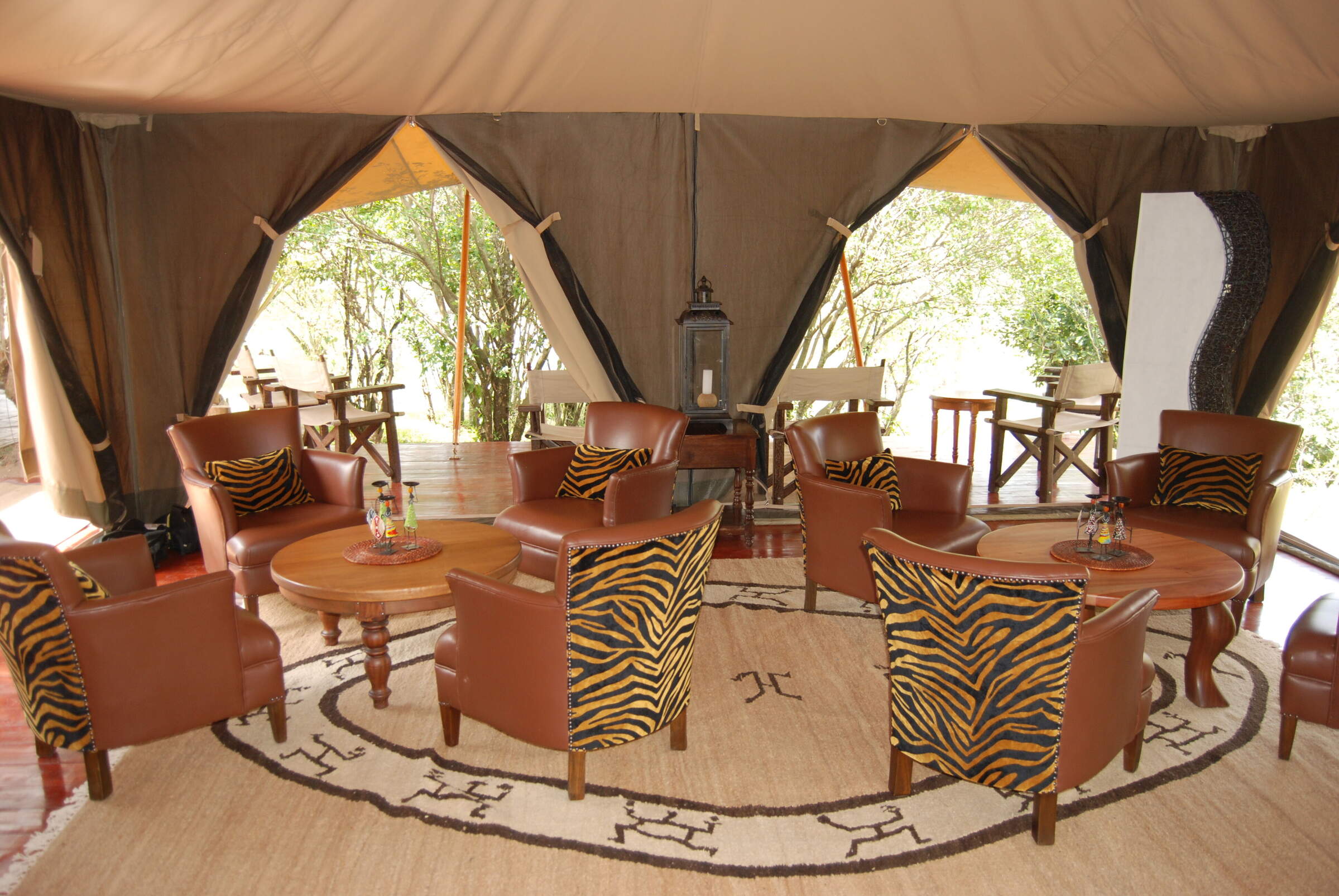
Ngenche Safari Camp
Mara Ngenche is a non-hosted, luxury tented camp with an antique style, which is perfect if you're looking for private dining while staying somewhere small and personal.
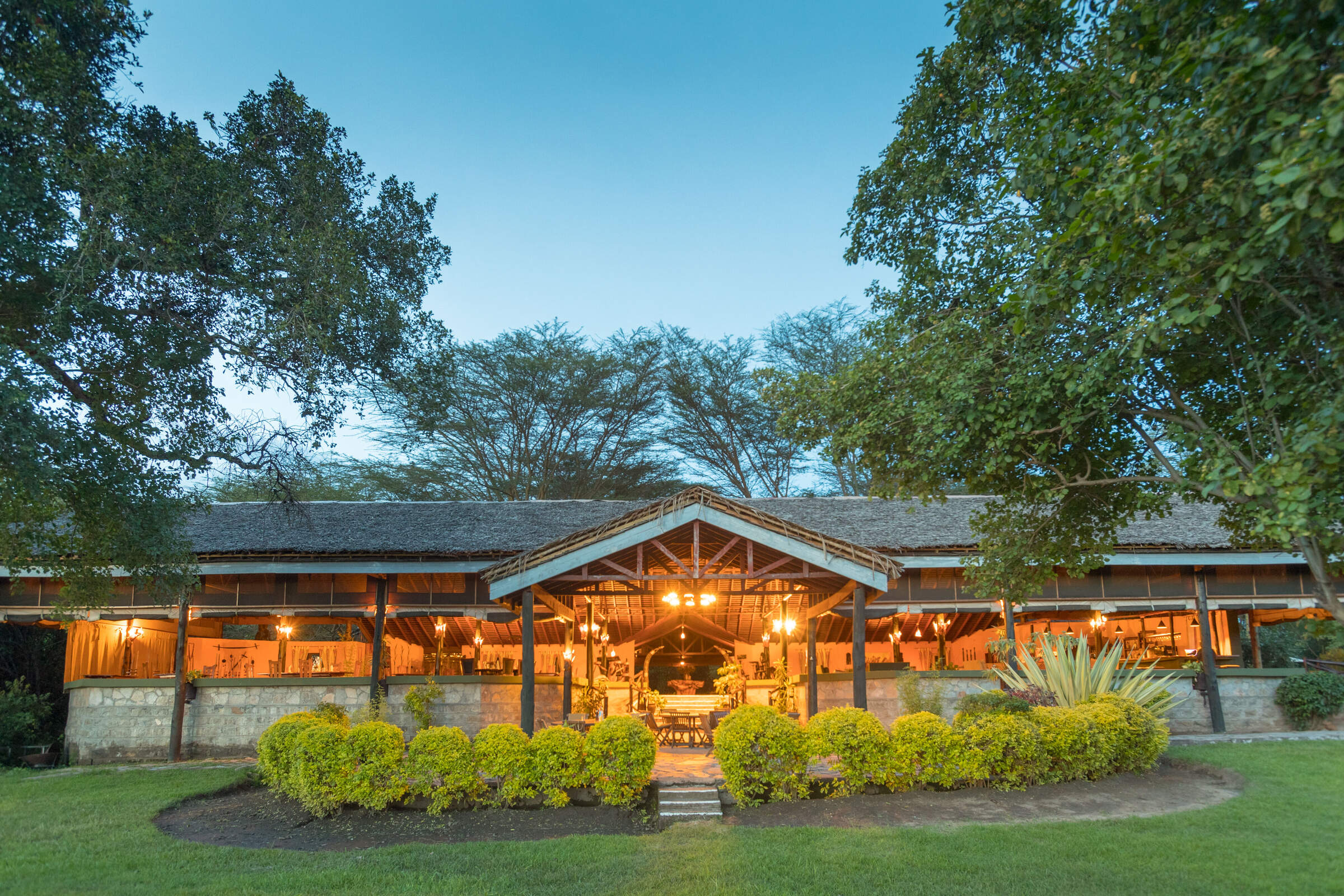
Tipilikwani Camp
Tipilikwani Mara Camp is a larger, mid-range tented camp offering good value from its base on the Talek River just outside the Mara National Reserve.
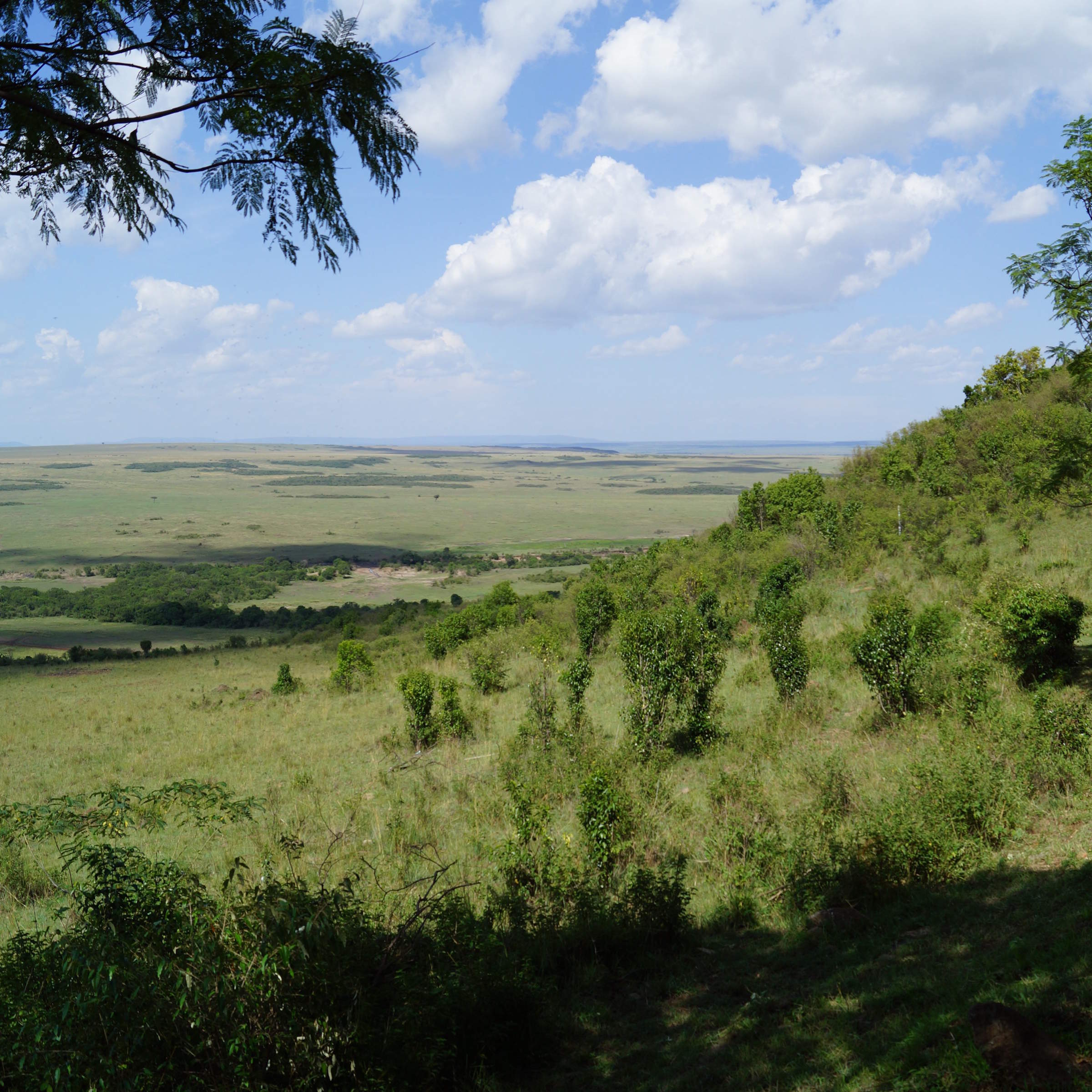
Mara Serena Safari Lodge
Mara Serena Safari Lodge is a large safari hotel with views of the Mara River, in the Mara Triangle sector of the Maasai Mara National Reserve.
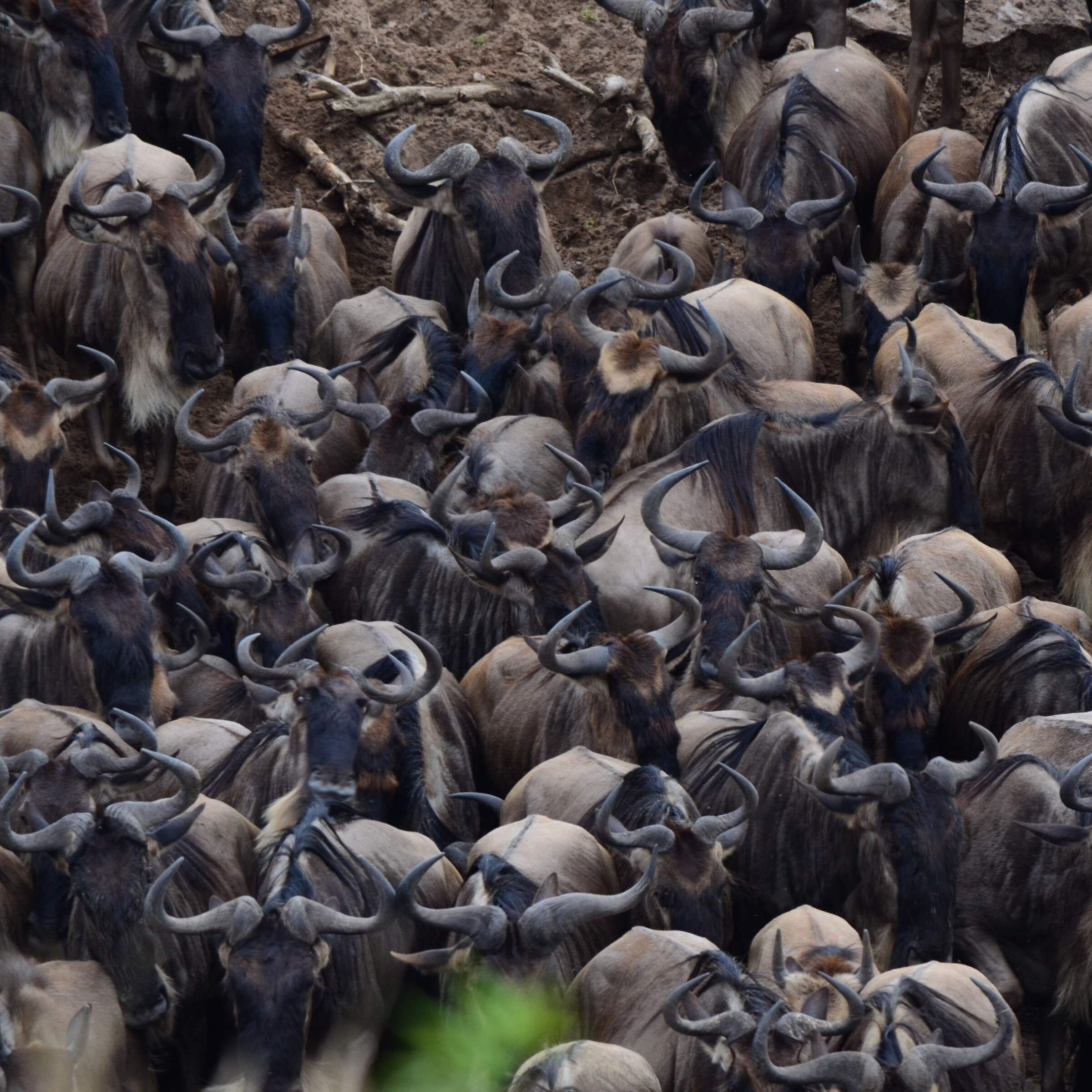
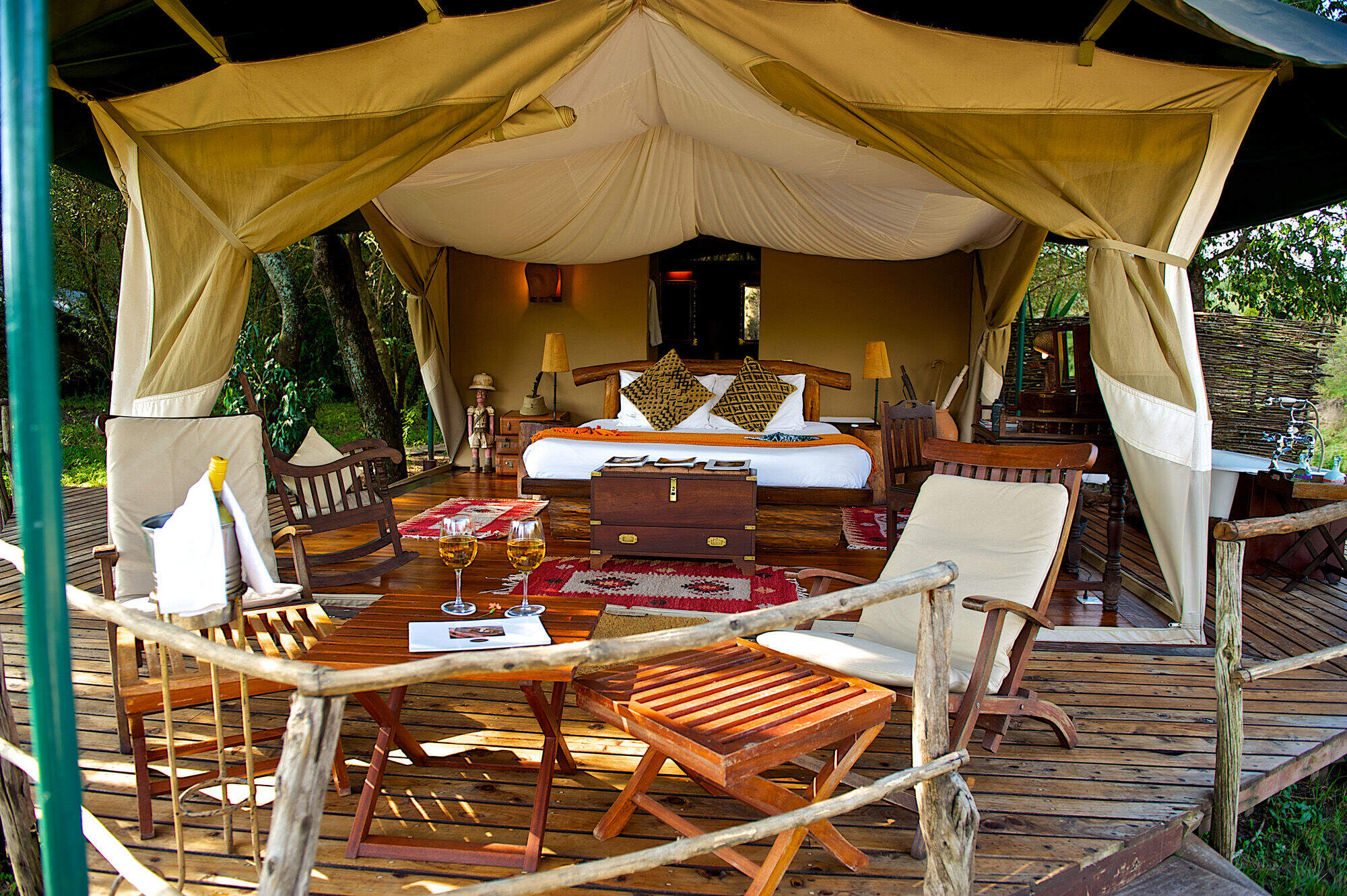
Mara Explorer Camp
Mara Explorer is a smart tented camp is in a scenic location on a bend in the Talek River.
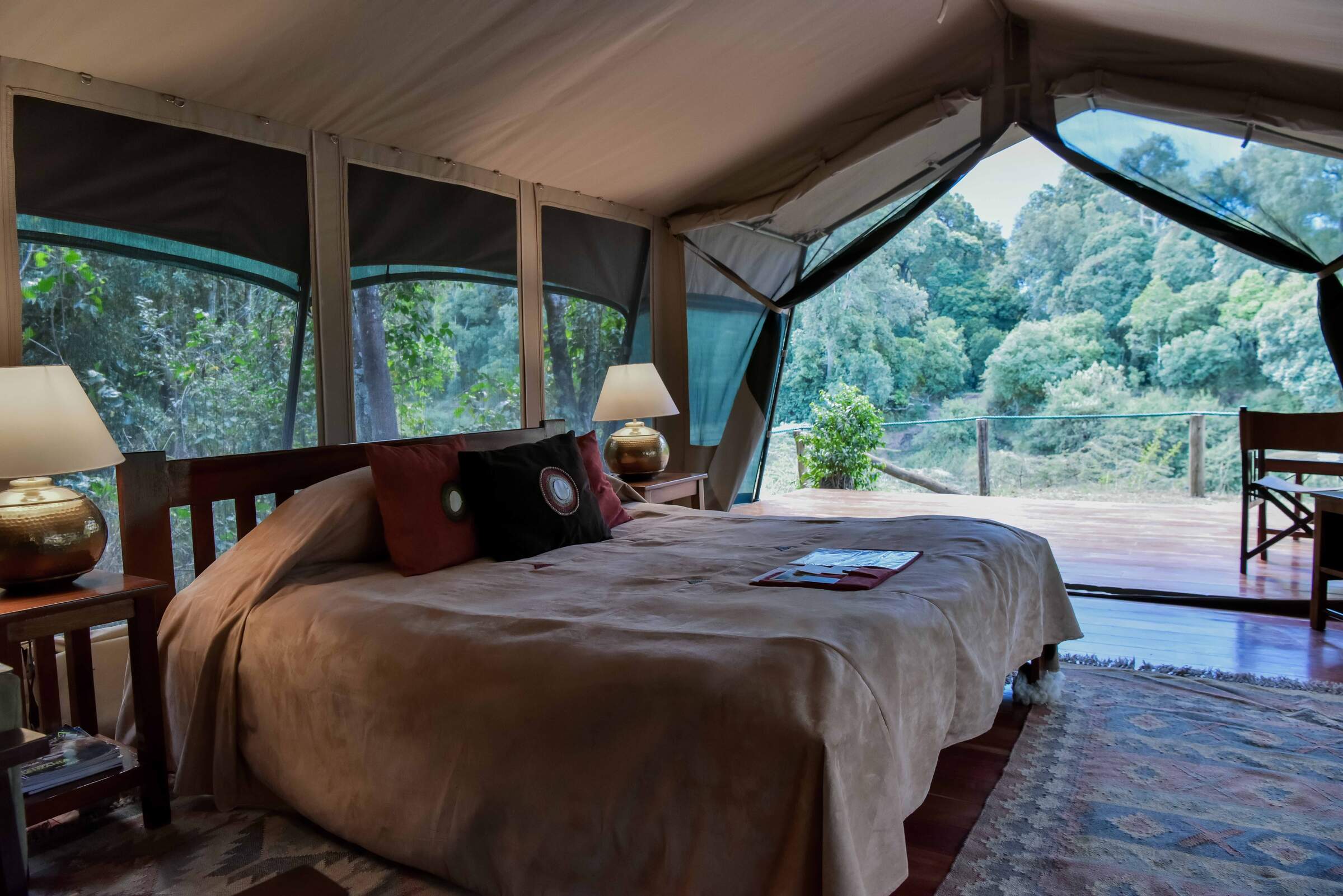
Governors' Private Camp
Located on a secluded bend of the Mara River, Governor’s Private Camp has just eight tents and is booked on an exclusive basis.
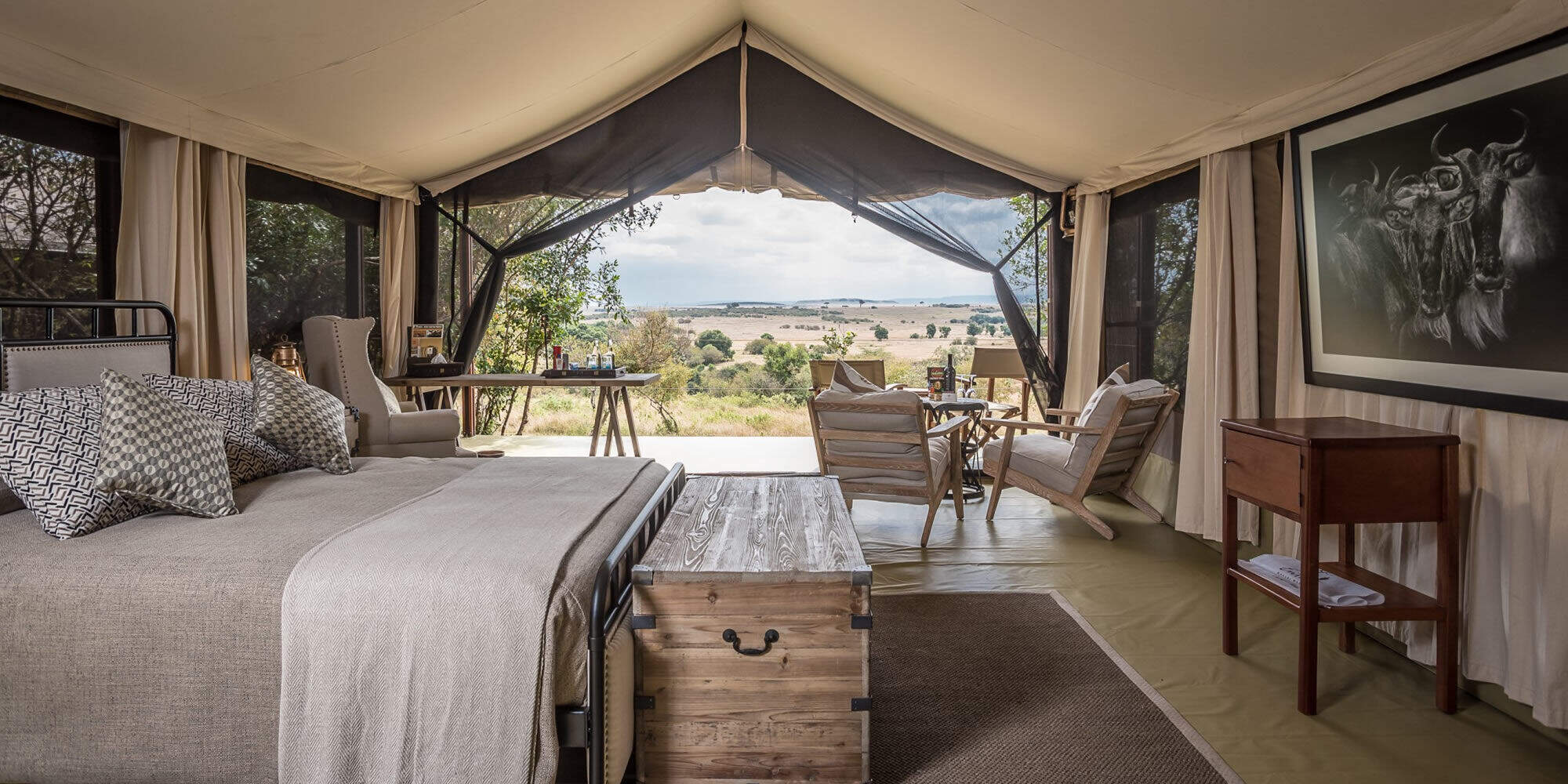
Entim Camp
Entim Camp is well located in the heart of the Mara National Reserve, offering traditionally styled tented accommodation.

Naibor Camp
Naibor has a great location in the Mara reserve, and offers accommodation to suit different budgets, with stylish high-end tents and some simpler ones too.
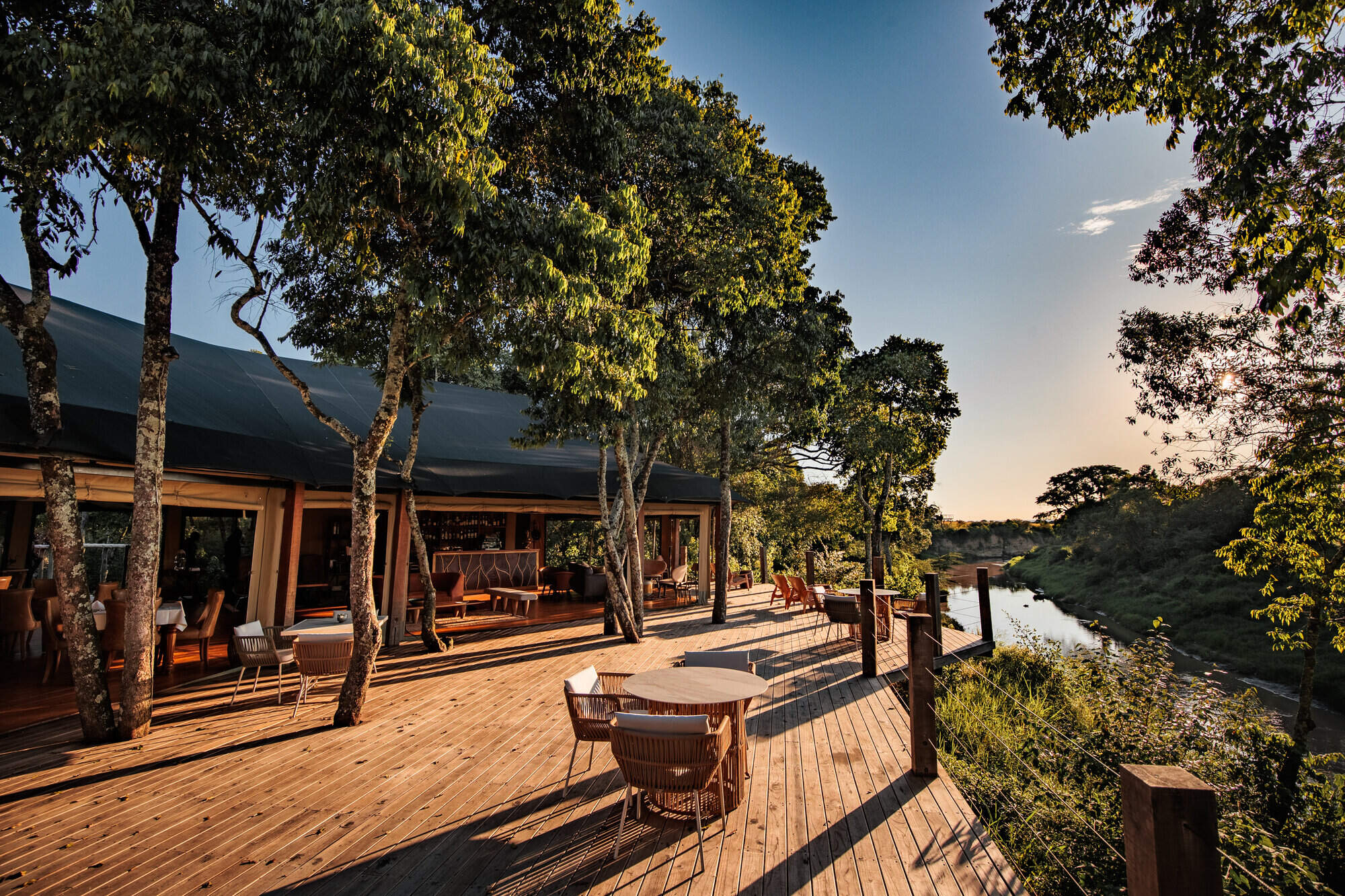
Ishara
Ishara is a highly luxurious safari camp in the Maasai Mara, located on the Talek River, which is one of the best areas in Kenya for wildlife.
When to go to Maasai Mara National Reserve
Our month by month guide: What it's like to visit Basecamp Maasai Mara in Maasai Mara National Reserve
Jan
Feb
Mar
Apr
May
Jun
Jul
Aug
Sep
Oct
Nov
Dec
Kenya in January
Clear, hot days and warm nights make this high season a popular time for safaris and it’s also good for diving and snorkelling as water clarity is excellent and gets better as the dry season progresses. Most lodges and tented camps treat January after the New Year week is over, as mid-season, making it a good compromise in terms of value for money with reasonably reliable, dry weather and some greenery left in the landscape.
Expert Africa bases its description of climate and weather in January, like the other months of the year, on the climate records of roughly the last 100 years, and it's fair to say that the weather and seasons since the beginning of this century have been highly irregular and unpredictable.
- On average, January is the second driest month of the year
- Elephants dig waterholes in the dry riverbed in the Samburu reserve.
- Wildebeest and many antelope have their calving season, to February.
- Migrant birds are seen in huge numbers, especially in the Rift Valley.
- Sea water clarity around the coral reefs generally good.
Our view
Fantastic: the very best time to visit
Weather in January
Kenya in February
With the short dry season well established, the grass grazed down and wildlife gathering close to water points, this is still a good time for a safari. Good water clarity in the Indian Ocean's coastal waters makes for excellent diving and snorkelling conditions.
Expert Africa bases its description of climate and weather in February, like the other months of the year, on the climate records of roughly the last 100 years, and it's fair to say that the weather and seasons since the beginning of this century have been highly irregular and unpredictable.
- On average, February is the driest month of the year.
- It’s sometimes possible to swim with whale sharks at Diani Beach.
- Migrant birds are still seen everywhere, especially near water.
- This is usually peak calving season for wildebeest and many antelopes.
- This month is often the hottest of the year, especially on the coast.
Our view
A very good time to visit
Weather in February
Kenya in March
Hot, increasingly humid weather – with good diving and snorkelling conditions at the start of the month – gives way to rains and lower accommodation costs. Expert Africa bases its description of climate and weather in March, like the other months of the year, on the climate records of roughly the last 100 years, and predicting the seasons since the beginning of this century has been difficult.
March is the month when – traditionally – intensely hot conditions build up until a cloudburst finally happens at the end of the month or in early April, to relieve the humidity. As ever, regional variations across the country can greatly impact on visitors' experiences.
- Sea-water clarity is best for diving before the long rains start.
- Visitor numbers are low, though the Easter holidays can be busier.
- Night skies can be scintillatingly clear in early March.
- Cropped down savannah grasses can make it easier to see the wildlife.
- Temperartures climb high, especially at lower elevations.
Our view
A good time to visit, with pros & cons
Weather in March
Kenya in April
April sees the full onset of the southeast monsoon wind or kusi, which heralds the long rains. Temperatures drop soon after the rains are established and you’ll often have facilities largely to yourself in this more affordable low season, sometimes known as the "green season". The bush quickly springs to life, with greenery sprouting almost before your eyes. While you're likely to get a fair number of heavy showers, the breaks in the rain can yield sparklingly clear conditions.
With the dust settled and bright sun piercing the clouds, conditions can be sublime for photography, especially first thing in the morning or in the late afternoon with another storm brewing. You may be lucky, or you may find conditions very wet and muddy.
- A wet month, the coast often gets more than 300mm (12in) of rain.
- Sunny spells can provide great light for photography.
- Buffalo and zebra calving season often happens in this month.
- Baby crocodiles hatch, for example on Central Island in Lake Turkana.
- Palearctic migrant birds gather to fly north to breeding grounds.
Our view
A time to avoid if possible
Weather in April
Kenya in May
While game viewing can be trickier as vegetation runs riot, between the cloudbursts the colours and light are great for photography at this time of year. Expert Africa bases its description of climate and weather in May, like the other months of the year, on the climate records of roughly the last 100 years, and while it's reasonable to expect heavy rains in many parts during this month, especially on the coast, the rains don't always come evenly or in some areas come at all.
In an El Niño year, the so-called long rains that normally are established across much of the country by May can be meagre, to the despair of farmers. On the other hand in a La Niña year, the long rains can bring floods. On the coast, the monsoon winds make the climate much more predictable, with heavy rains common throughout this month.
- Frogs breed in the ponds in the Arabuko Sokoke Forest near Watamu.
- Wildebeest, impala and other grazers are in rut (the breeding season).
- Kilimanjaro looks its best as heavy rain falls as snow on the summit.
- There's a sharp peek of rainfall on the coast with many rainy days.
- Accommodation prices are uniformly low, while some camps close.
Our view
A time to avoid if possible
Weather in May
Kenya in June
The rains give way to cloudy, cooler weather, often making for comfortable conditions by the end of the month, especially in the highlands. Starting from mid-June or the beginning of July and running until the end of October, this is the high season, and accordingly has higher accommodation rates and – at least until early September – higher numbers of visitors.
While the early part of June can often be rainy on the coast, it can be a great time to go on safari, with fresh greenery, many young animals and good photographic conditions with clear air.
- The Taru Desert, inland from the coast, is carpeted with flowers.
- The Lake Turkana Cultural Festival is held in Loiyangalani.
- Madaraka Day (commemorating self rule) is 1 June.
- The annual Lewa marathon runs a course through the wildlife.
- The Diani Rules "sports" event rips up the rulebook at Diani Beach.
Our view
A good time to visit, with pros & cons
Weather in June
Kenya in July
Kenya’s “winter" season sets in (winter is a misnomer but locals feel the change), and the highlands can be rather grey. Skies are often cloudy and the days can be surprisingly cool, with an average daytime high in many highland safari areas of 15-20°C and night-time temperatures dropping below 10°C in Nairobi and the highlands. Lower parts of the country and the coast are usually warm and dry, typically reaching highs of around 25°C with lows in the high teens.
As this is the start of the high season, coinciding with the usual arrival of the wildebeest migration in the Maasai Mara, July is a busy month. Ask your Expert Africa specialist to advise on how to avoid the crowds, which is not that difficult to do.
- The wildebeest migration usually reaches the Maasai Mara in July.
- Simbi Lake (Kisumu) and Crater Lake (Naivasha) can attract flamingoes.
- Watersports start to pick up and some surfing is possible at Malindi.
- Afternoon thunderstorms are a common feature in the Maasai Mara.
- The sea can be choppy along the coast, making diving difficult.
Our view
A good time to visit, with pros & cons
Weather in July
Kenya in August
The Great Migration fills the plains of the Maasai Mara, and school’s out, so the park roads are full of tourists – ask your Expert Africa specialist for advice on crowd avoidance tactics. Choose a private conservancy rather than a public national park or national reserve for quieter conditions.
Like July, August is generally mild and relatively dry in the safari areas, but it can be very chilly in the highlands, even in the middle of the day, and hail occasionally falls above altitudes of around 2,400m (8,000ft). Nairobi can be disappointingly overcast, with low cloud.
- Apart from Christmas holidays, this is the busiest month of the year.
- Late August sees peak wildebeest drama at the Mara River crossings.
- Coastal winds are good for kite- and wind-surfing.
- Few mosquitoes are around at this generally dry time of year.
- The annual Camel Derby takes place in the Samburu capital, Maralal.
Our view
A good time to visit, with pros & cons
Weather in August
Kenya in September
The skies clearing of cloud signals the start of hot, dry weather with little chance of rain – and, after the first few days of the month, far fewer visitors – making the latter part of September a good time for a quieter safari. While early September is often good for dramatic migration crossings along the Mara River, you might consider deliberately postponing your trip until later in the month, when the migration can still be very impressive and visitor numbers fewer.
If tourist surges are somewhat predictable, however, the patterns of the wildebeest migration are more volatile, and like all of Expert Africa's climate and weather assessments, they are based on accumulated years of experience rather than guaranteed certainty.
- This is still high season, with prices to match.
- Many river crossings take place on the Mara river in both directions.
- Natural bush fires flush out insects and small animals for predators.
- The Rift Valley Music Festival takes place by Lake Naivasha.
- With school holidays over by early September, late-month is quieter.
Our view
Fantastic: the very best time to visit
Weather in September
Kenya in October
Still hot, mostly dry and not too busy, this is many people’s preferred month for a safari, and it’s also good for diving and snorkelling. The wildebeest and zebra herds of the great migration are often still to be seen, though in dwindling numbers. The swamps of Amboseli attract thirsty wildlife including large herds of elephants.
While we wouldn't expect much rain across most of the country this month, the climate has become so unpredictable that you can never say never, and the possibiity of the short rains – usually associated with November to mid-December, starting early, can't be discounted.
- This month sees the tail end of the great migration in the Mara.
- Palearctic migrant birds start to arrive, staying until March.
- Turtle nests hatch at Watamu, until November.
- Amboseli elephants focus on the swamps for their daily water.
- The Indian Ocean monsoon winds turn from southeast to northeast.
Our view
A very good time to visit
Weather in October
Kenya in November
The northeast monsoon wind or kaskazi heralds the start of the “short rains", usually some time in the second half of the month. From November to mid-December, this is the low season, and accordingly has lower accommodation rates and lower visitor numbers. Across most of the country you can expect warm, somewhat cloudy weather, with occasional heavy showers and localised flooding.
Expert Africa bases its description of the climate in November, like the other months of the year, on the records of roughly the last 100 years, and it's fair to say that the seasons since the beginning of this century have been highly irregular and unpredictable: some years the short rains don't come at all, or don't reach every part of the country. In an El Niño year, the November short rains can be very heavy, but in a La Niña year, they can fail completely.
- Swimming with dolphins in Lamu can be done from now until April.
- Birders gather at Ngulia in Tsavo West to ring Palearctic migrants.
- The Lamu Cultural Festival takes over the town and Lamu Creek.
- Agricultural shows often take place regional market towns.
- This is low season, so camps can be great value, with special offers.
Our view
A good time to visit, with pros & cons
Weather in November
Kenya in December
In a typical December, the rains usually finish by middle of the month, leaving the landscape looking its best, under clear blue skies, and heralding the start of the second peak tourist season from around 20 December to the first week of January. Our assessment of the likely weather in December, like the other months of the year, is based on climate records, and it's fair to say that the seasons since the beginning of this century have been highly irregular and unpredictable.
Christmas can sometimes be wet, but most years the rains have finished a week or two earlier, with the festive season ushering in the perfect combination of clear skies and sunshine by day and starry nights.
- Christmas and New Year are busy, with the lodges and camps full.
- Rates are highest after 24 Dec, with supplements on public holidays.
- Republic Day and Independence day are celebrated on 12 December.
- Good kite- and wind-surfing restarts, with strong northeasterly winds.
- Mango season begins, providing excitement for primates and elephants.
Our view
A good time to visit, with pros & cons
Weather in December

Looking for inspiration on where to travel next?
Visit our trip chooser to explore your options and find inspiration for your perfect African adventure
Inspire me